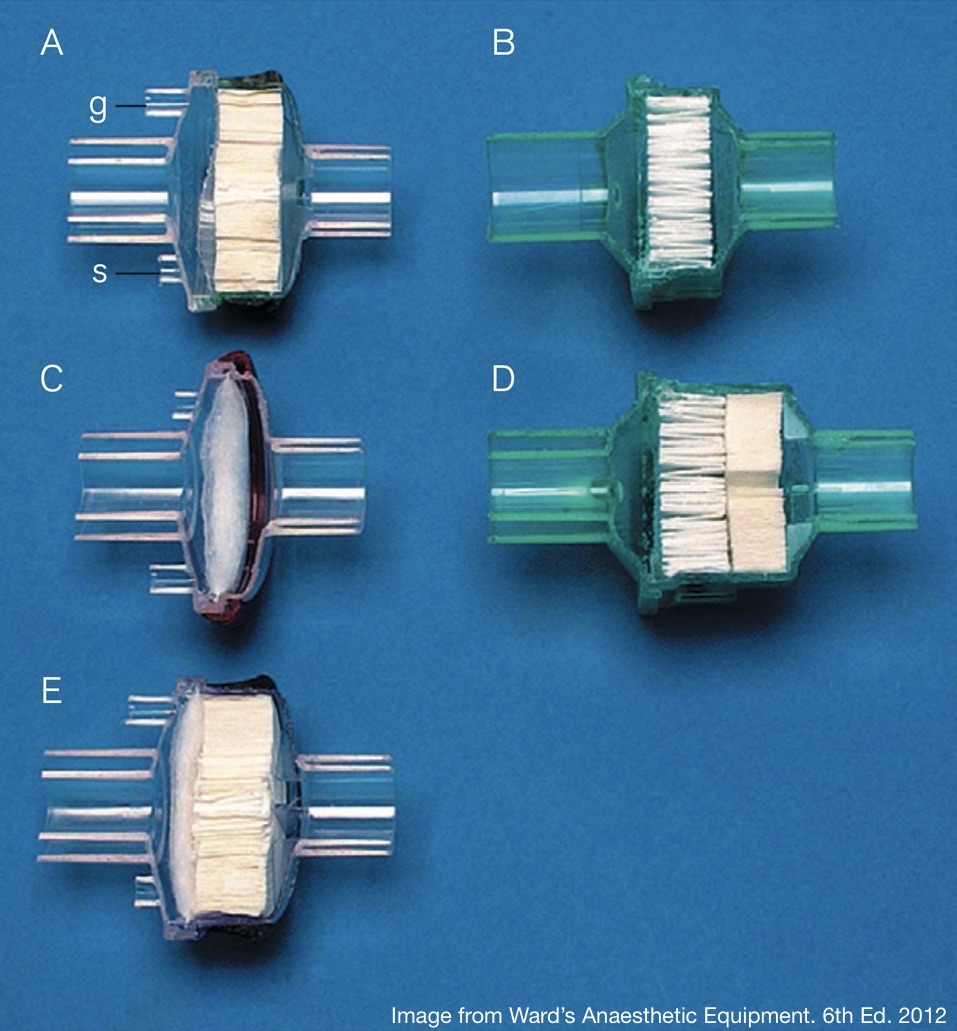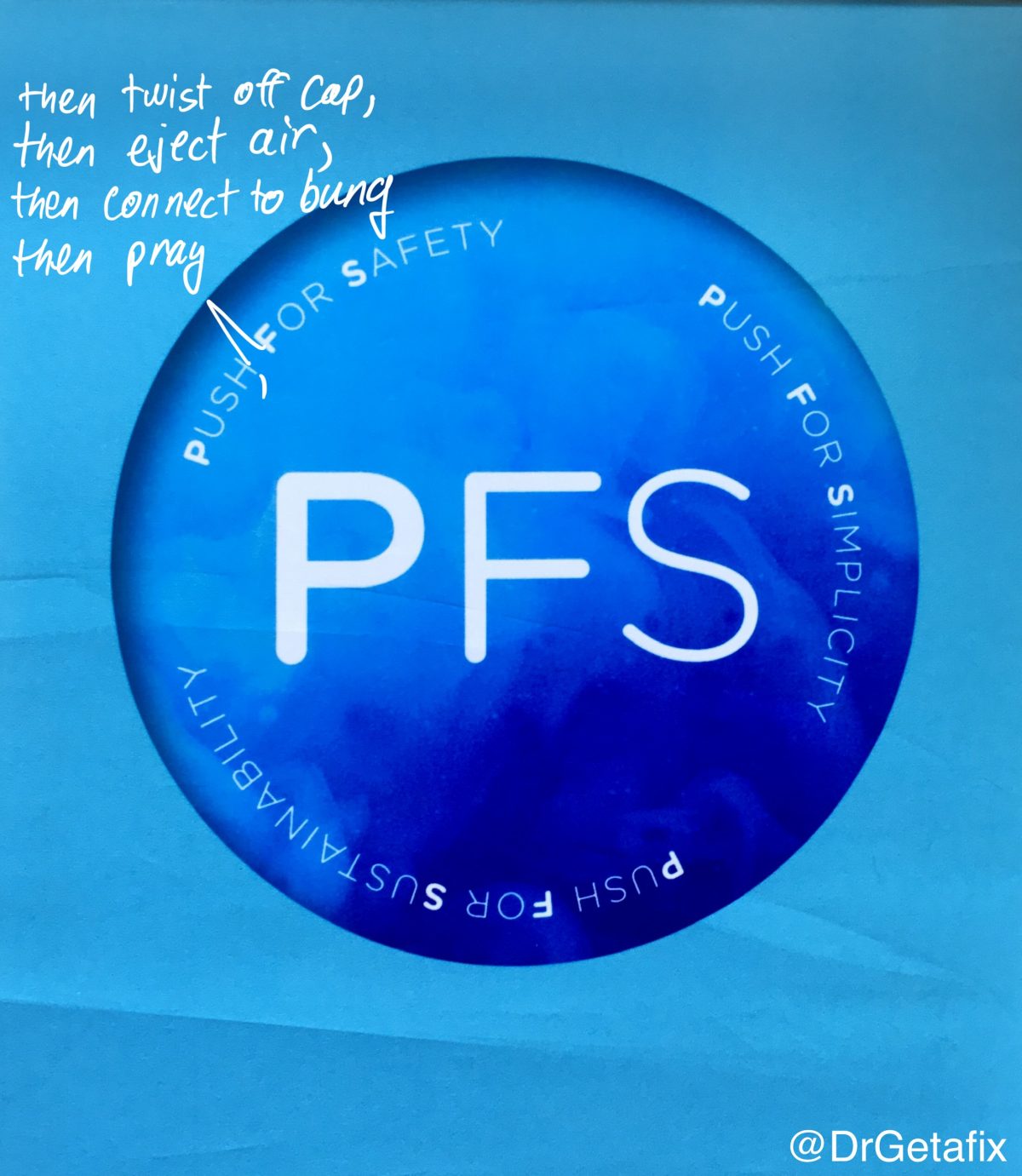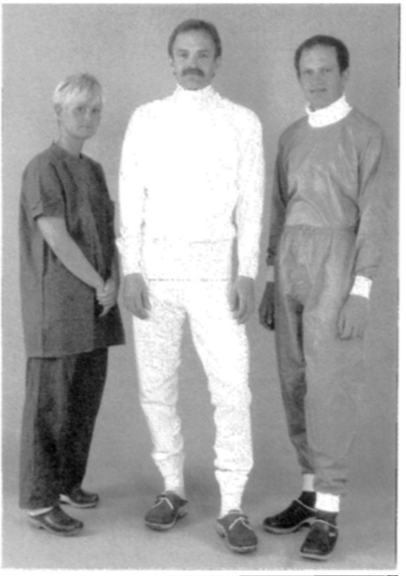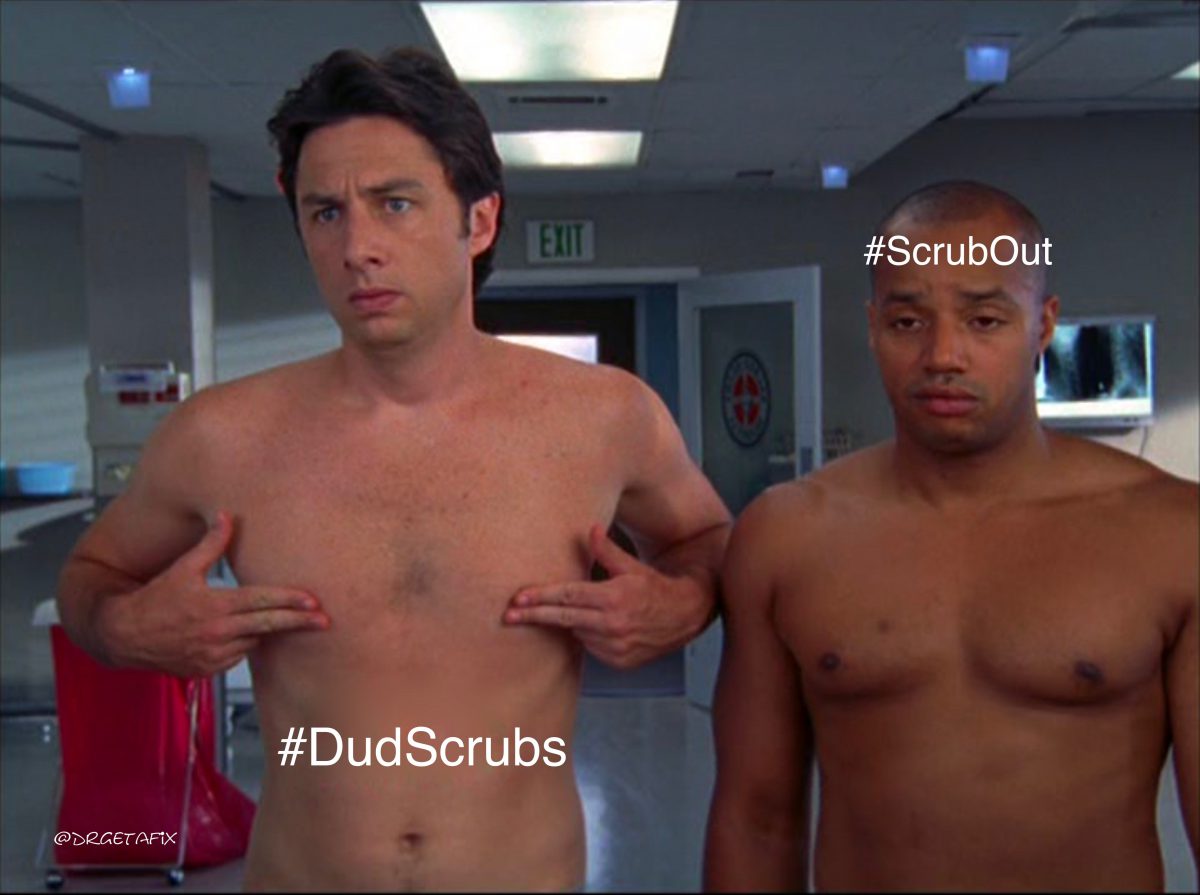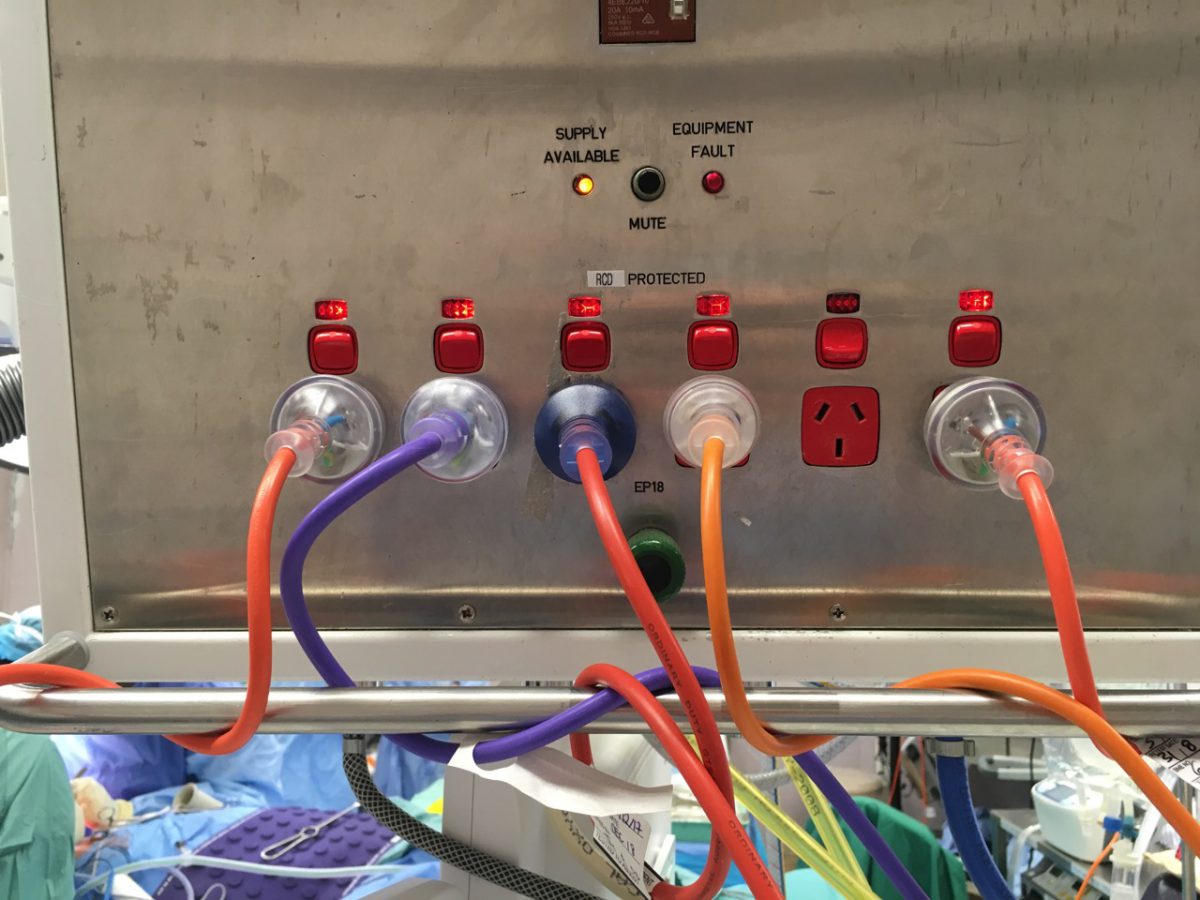The topic of head coverings for operating theatre staff has garnered much attention in recent years for a number of reasons. These include:
- Hospital policies banning the use of cloth caps (for infection control reasons) impeding the take up and effectiveness of the “Theatre Cap Challenge”
- A controversial policy in the USA mandating a particular style of theatre cap over that preferred by many surgeons
- Increasing concerns about the environmental impact of healthcare, and a desire to shift away from single use to reusable items with a move towards cloth theatre caps being part of that
- Covid related shortages forcing some hospitals to go back to reusable caps and gowns where previously they’d mandated disposable versions.
This has prompted a lot of research and debate, and i thought it would be helpful to collate some of the articles for easy reference/access. Below are number links to each article, with the full reference list at the bottom. I will continue to add more references as I come across them.
Discussions, reviews, editorials etc
This is a blog post I wrote looking at the references cited in the ACORN standards regarding head coverings.
A Challenge to Cloth Theatre Caps?
A review and discussion of the topic of perioperative attire. Includes reference to two studies showing naked staff contaminate theatres less than clothed staff!
Naked Surgeons? The Debate About What to Wear in the Operating Room. - Clinical Infectious Diseases
Editorial looking at the infection control concerns compared with the benefits of having staff names and roles on head coverings
Competing patient safety concerns about surgical scrub caps – Infection control vs. breakdowns in communication. - Journal of Patient Safety and Risk Management
This is the joint statement put out by the American College of Surgeons, the American Society of Anesthesiologists, the Association of peri-Operative Registered Nurses , the Association for Professionals in Infection Control and Epidemiology, the Association of Surgical Technologists, and the Council on Surgical and Perioperative Safety after they finally all got together to discuss head coverings
Recommendations for Operating Room Attire
Review article looking at a variety of “specialised garments” intended to reduce sugical site infections, including head coverings.
Surgeon’s garb and infection control: What’s the evidence? - Journal of the American Academy of Dermatology
A review looking at a variety of physical and environmental interventions, including head coverings, to reduce surgical site infections.
Protection of the patient in the operating suite - The Journal of Hospital Infection
Before-and-After studies following mandated changes to head coverings +/- other aspects of perioperative attire.
Study based on prospectively collected NSQIP data following introduction of AORN Guidelines on head coverings.
Have Recent Modifications of Operating Room Attire Policies Decreased Surgical Site Infections? An American College of Surgeons NSQIP Review of 6,517 Patients. - Journal of the American College of Surgeons
Another study utilising NSQIP data, this time specifically looking at abdominal surgery following mandating of long sleeve jackets and bouffant head coverings.
New barrier attire regulations in the operating room: A mandate without basis? - American Journal of Surgery
Yet another NSQIP based study looking at surgical site infections after mandated change to bouffant head coverings.
The art and science of surgery: Do the data support the banning of surgical skull caps? - Surgery
Before-and-study following the change from “skull caps” to “bouffant caps”, specifically within the neurosurgical setting.
Mandatory Change From Surgical Skull Caps to Bouffant Caps Among Operating Room Personnel Does Not Reduce Surgical Site Infections in Class I Surgical Cases: A Single-Center Experience With More Than 15 000 Patients. - Neurosurgery
As well as surgical site infections this study also includes data on the financial cost of implementing the AORN Guidelines.
Operating Room Attire Policy and Healthcare Cost: Favoring Evidence over Action for Prevention of Surgical Site Infections. - Journal of the American College of Surgeons
Before-and-after study looking at surgical site infections following mandating use of disposable jackets and bouffant-style head coverings. Also includes data on the financial cost of the change.
Association of Surgical Jacket and Bouffant Use With Surgical Site Infection Risk. - JAMA Surgery
Other studies related to the “Bouffant Scandal”
Comparison of surgeons head covering preferences with incidence of hernia surgical site infections recorded in a prospectively collected database.
Is there an association between surgeon hat type and 30-day wound events following ventral hernia repair? - Hernia
Re-analysis of data from a previous randomised controlled trial looking at surgical site infections, and comparing it to surgeon theatre cap preference.
Bouffant vs Skull Cap and Impact on Surgical Site Infection: Does Operating Room Headwear Really Matter? - Journal of the American College of Surgeons
Microbiological studies assessing factors influencing bacterial shedding, dispersal, contamination etc.
Quantitative study of disposable and cloth head coverings and their impact on various markers of operating theatre contamination.
Hats Off: A Study of Different Operating Room Headgear Assessed by Environmental Quality Indicators. - Journal of the American College of Surgeons
Assessing individual variation in shedding of Staphylococcus aureus and the impact of clothing. This is one of the two studies mentioned above that found less bacteria is shed when naked compared to clothed!
Effect of clothing on dispersal of Staphylococcus aureus by males and females. - The Lancet
Another study showing that bacterial dispersal is less when naked than when clothed!
Dispersal of non-sporeforming anaerobic bacteria from the skin - Epidemiology & Infection
Looking at the effect of head coverings on airborne contamination.
The effect of surgical theatre head-gear on air bacterial counts. - Journal of Hospital Infection
Microbiological study looking at the effect of perioperative attire, including head coverings, on air and surface contamination in conventional and laminar flow operating theatres.
Clothing in laminar-flow operating theatres - Journal of Hospital Infection
Assessment of a number of combinations of “surgical garb”, including a variety of different head coverings, including the impact of using hairspray!
The Surgeon's Garb - Clinical Orthopaedics and Related Research
Miscellaneous
Before-and-after study looking at surgical site infections after they switched from disposable head coverings, shoe covers, and masks to reusable items due to covid induced shortages.
Pandemic Operating Room Supply Shortage and Surgical Site Infection: Considerations as We Emerge from the Coronavirus Disease 2019 Pandemic. - Journal of the American College of Surgeons
{4088554:VHCYDDFY};{4088554:ED5PRDD5};{4088554:FSPFR3QD};{4088554:NFK5P7GH};{4088554:6E5J4P3X};{4088554:LXHR8KIS};{4088554:ET6R6GNC};{4088554:W3KTJE9R};{4088554:2ZQRBP89};{4088554:4TFQI5HH};{4088554:NTWGJ83L};{4088554:XYFE3HF9};{4088554:FYDD9GRX};{4088554:UX29M2LE};{4088554:JIG2T5Y4};{4088554:G42BJBN3};{4088554:MEFT88BA};{4088554:XDIQGI9I};{4088554:GYAA7L83};{4088554:R32ZEEKQ};{4088554:TYPX9DD7}
nature
default
asc
no
1838
%7B%22status%22%3A%22success%22%2C%22updateneeded%22%3Afalse%2C%22instance%22%3A%22zotpress-7554d11ee600679954c06ec29bd3bd0d%22%2C%22meta%22%3A%7B%22request_last%22%3A0%2C%22request_next%22%3A0%2C%22used_cache%22%3Atrue%7D%2C%22data%22%3A%5B%7B%22key%22%3A%22MEFT88BA%22%2C%22library%22%3A%7B%22id%22%3A4088554%7D%2C%22meta%22%3A%7B%22creatorSummary%22%3A%22Benediktsd%5Cu00f3ttir%20and%20Hambraeus%22%2C%22parsedDate%22%3A%221982-06%22%2C%22numChildren%22%3A3%7D%2C%22bib%22%3A%22%3Cdiv%20class%3D%5C%22csl-bib-body%5C%22%20style%3D%5C%22line-height%3A%202%3B%20%5C%22%3E%5Cn%20%20%3Cdiv%20class%3D%5C%22csl-entry%5C%22%20style%3D%5C%22clear%3A%20left%3B%20%5C%22%3E%5Cn%20%20%20%20%3Cdiv%20class%3D%5C%22csl-left-margin%5C%22%20style%3D%5C%22float%3A%20left%3B%20padding-right%3A%200.5em%3B%20text-align%3A%20right%3B%20width%3A%201em%3B%5C%22%3E1.%3C%5C%2Fdiv%3E%3Cdiv%20class%3D%5C%22csl-right-inline%5C%22%20style%3D%5C%22margin%3A%200%20.4em%200%201.5em%3B%5C%22%3EBenediktsd%26%23xF3%3Bttir%2C%20E.%20%26amp%3B%20Hambraeus%2C%20A.%20Dispersal%20of%20non-sporeforming%20anaerobic%20bacteria%20from%20the%20skin.%20%3Ci%3EJ%20Hyg%20%28Lond%29%3C%5C%2Fi%3E%20%3Cb%3E88%3C%5C%2Fb%3E%2C%20487%26%23x2013%3B500%20%281982%29.%3C%5C%2Fdiv%3E%5Cn%20%20%3C%5C%2Fdiv%3E%5Cn%3C%5C%2Fdiv%3E%22%2C%22data%22%3A%7B%22itemType%22%3A%22journalArticle%22%2C%22title%22%3A%22Dispersal%20of%20non-sporeforming%20anaerobic%20bacteria%20from%20the%20skin%22%2C%22creators%22%3A%5B%7B%22creatorType%22%3A%22author%22%2C%22firstName%22%3A%22E.%22%2C%22lastName%22%3A%22Benediktsd%5Cu00f3ttir%22%7D%2C%7B%22creatorType%22%3A%22author%22%2C%22firstName%22%3A%22A.%22%2C%22lastName%22%3A%22Hambraeus%22%7D%5D%2C%22abstractNote%22%3A%22Dispersal%20of%20non-sporeforming%20anaerobic%20bacteria%20was%20studied.%20Skin%20samples%20were%20taken%20from%20the%20subjects%2C%20and%20dispersed%20from%20different%20parts%20of%20the%20body%20was%20examined.%20The%20number%20of%20anaerobic%20bacteria%20dispersed%20was%20not%20correlated%20to%20their%20density%20on%20the%20surface%20of%20skin%20area%20exposed.%20The%20highest%20density%20of%20anaerobic%20bacteria%20on%20the%20skin%20was%20found%20in%20the%20face%20and%20upper%20trunk%2C%20but%20the%20highest%20yield%20of%20anaerobic%20bacteria%20dispersed%20came%20from%20the%20lower%20trunk.%20The%20dominant%20anaerobic%20bacteria%20dispersed%20were%20Propionibacterium%20acnes%2C%20but%20Propionibacterium%20avidum%2C%20Propionibacterium%20granulosum%20and%20Gram-positive%20cocci%20were%20also%20isolated%20from%20the%20dispersal%20samples.%20Peptococcus%20magnus%20was%20the%20most%20common%20coccus%20isolated.%20For%20the%20less%20frequently%20isolated%20bacteria%2C%20the%20best%20correlation%20was%20found%20between%20the%20perineal%20flora%20and%20airborne%20bacteria.%20A%20comparison%20was%20also%20made%20of%20bacterial%20dispersal%20by%20naked%20and%20dressed%20subjects.%20The%20dispersal%20of%20both%20aerobic%20and%20anaerobic%20bacteria%20was%20higher%20when%20the%20subjects%20were%20dressed%20in%20conventional%20operating%20theatre%20cotton%20clothing%20than%20when%20they%20were%20naked.%20The%20increased%20dispersal%20of%20anaerobic%20bacteria%20when%20the%20subjects%20were%20dressed%20was%20mainly%20due%20to%20increased%20dispersal%20of%20Propionibacterium%20sp.%22%2C%22date%22%3A%221982-06%22%2C%22language%22%3A%22eng%22%2C%22DOI%22%3A%2210.1017%5C%2Fs0022172400070340%22%2C%22ISSN%22%3A%220022-1724%22%2C%22url%22%3A%22%22%2C%22collections%22%3A%5B%22XNRXVFNC%22%5D%2C%22dateModified%22%3A%222024-03-17T04%3A43%3A29Z%22%7D%7D%2C%7B%22key%22%3A%22GYAA7L83%22%2C%22library%22%3A%7B%22id%22%3A4088554%7D%2C%22meta%22%3A%7B%22creatorSummary%22%3A%22Hubble%20et%20al.%22%2C%22parsedDate%22%3A%221996-01-01%22%2C%22numChildren%22%3A2%7D%2C%22bib%22%3A%22%3Cdiv%20class%3D%5C%22csl-bib-body%5C%22%20style%3D%5C%22line-height%3A%202%3B%20%5C%22%3E%5Cn%20%20%3Cdiv%20class%3D%5C%22csl-entry%5C%22%20style%3D%5C%22clear%3A%20left%3B%20%5C%22%3E%5Cn%20%20%20%20%3Cdiv%20class%3D%5C%22csl-left-margin%5C%22%20style%3D%5C%22float%3A%20left%3B%20padding-right%3A%200.5em%3B%20text-align%3A%20right%3B%20width%3A%201em%3B%5C%22%3E1.%3C%5C%2Fdiv%3E%3Cdiv%20class%3D%5C%22csl-right-inline%5C%22%20style%3D%5C%22margin%3A%200%20.4em%200%201.5em%3B%5C%22%3EHubble%2C%20M.%20J.%20%3Ci%3Eet%20al.%3C%5C%2Fi%3E%20Clothing%20in%20laminar-flow%20operating%20theatres.%20%3Ci%3EJournal%20of%20Hospital%20Infection%3C%5C%2Fi%3E%20%3Cb%3E32%3C%5C%2Fb%3E%2C%201%26%23x2013%3B7%20%281996%29.%3C%5C%2Fdiv%3E%5Cn%20%20%3C%5C%2Fdiv%3E%5Cn%3C%5C%2Fdiv%3E%22%2C%22data%22%3A%7B%22itemType%22%3A%22journalArticle%22%2C%22title%22%3A%22Clothing%20in%20laminar-flow%20operating%20theatres%22%2C%22creators%22%3A%5B%7B%22creatorType%22%3A%22author%22%2C%22firstName%22%3A%22M.%20J.%22%2C%22lastName%22%3A%22Hubble%22%7D%2C%7B%22creatorType%22%3A%22author%22%2C%22firstName%22%3A%22A.%20E.%22%2C%22lastName%22%3A%22Weale%22%7D%2C%7B%22creatorType%22%3A%22author%22%2C%22firstName%22%3A%22J.%20V.%22%2C%22lastName%22%3A%22Perez%22%7D%2C%7B%22creatorType%22%3A%22author%22%2C%22firstName%22%3A%22K.%20E.%22%2C%22lastName%22%3A%22Bowker%22%7D%2C%7B%22creatorType%22%3A%22author%22%2C%22firstName%22%3A%22A.%20P.%22%2C%22lastName%22%3A%22MacGowan%22%7D%2C%7B%22creatorType%22%3A%22author%22%2C%22firstName%22%3A%22G.%20C.%22%2C%22lastName%22%3A%22Bannister%22%7D%5D%2C%22abstractNote%22%3A%22%3Ch2%3EAbstract%3C%5C%2Fh2%3E%3Cp%3EBacterial%20shedding%2C%20wound%20contamination%20and%20clinical-infection%20rates%20in%20clean%20wounds%20are%20influenced%20by%20operating-theatre%20dress.%20The%20aim%20of%20this%20study%20was%20to%20clarify%20the%20relative%20contribution%20of%20hats%2C%20masks%20and%20clothing%20to%20the%20control%20of%20wound%20contamination%20in%20both%20ultraclean%20%28enclosed%20vertical%20laminar-flow%29%20and%20conventional%20%28plenum%20ventilated%29%20airflow%20theatres.%20Personnel%20wore%20varying%20combinations%20of%20dress%20in%20both%20types%20of%20theatre.%20Colony%20forming%20units%20%28cfus%29%20were%20measured%20on%20settle%20plates%20at%20head%20and%20waist%20height%2C%20and%20in%20the%20air%20by%20a%20centrifugal%20air%20sampler.%20Bacterial%20counts%20in%20conventional%20theatres%20were%20consistently%20high%20and%20were%20not%20significantly%20influenced%20by%20theatre%20dress.%20There%20was%20a%2022-fold%20increase%20in%20cfus%20on%20settle%20plates%20at%20waist%20height%20when%20neither%20hat%20nor%20mask%20were%20worn%2C%20a%2015-fold%20increase%20when%20a%20hat%20but%20no%20mask%20was%20worn%20and%20a%20fourfold%20increase%20with%20a%20mask%20but%20no%20hat%20in%20vertical%20laminar%20airflow%20enclosures%2C%20although%20air%20sample%20counts%20remained%20low.%20When%20balloon-cotton%20clothing%20was%20worn%2C%20rather%20than%20cuffed%20polyester%20with%20microfilament%20barrier-fabric%20gowns%2C%20cfu%20counts%20rose%20by%20a%20factor%20of%20six.%20The%20bacterial%20inoculum%20in%20conventionally%20ventilated%20theatres%2C%20or%20in%20ultraclean%20theatres%20if%20hat%20or%20mask%20are%20omitted%20or%20balloon-cotton%20clothing%20worn%2C%20is%20theoretically%20sufficient%20to%20infect%20a%20prosthetic%20arthroplasty.%20Theatre-air%20sampling%20alone%20does%20not%20reflect%20local%20contamination%20when%20a%20surgeon%20stands%20over%20a%20wound%20in%20a%20vertical%20laminar-flow%20enclosure%2C%20and%20both%20hats%20and%20masks%20are%20an%20important%20part%20of%20dress%20in%20such%20environments.%3C%5C%2Fp%3E%22%2C%22date%22%3A%221996%5C%2F01%5C%2F01%22%2C%22language%22%3A%22English%22%2C%22DOI%22%3A%2210.1016%5C%2FS0195-6701%2896%2990159-0%22%2C%22ISSN%22%3A%220195-6701%2C%201532-2939%22%2C%22url%22%3A%22https%3A%5C%2F%5C%2Fwww.journalofhospitalinfection.com%5C%2Farticle%5C%2FS0195-6701%2896%2990159-0%5C%2Fabstract%22%2C%22collections%22%3A%5B%22XNRXVFNC%22%5D%2C%22dateModified%22%3A%222023-06-29T11%3A20%3A20Z%22%7D%7D%2C%7B%22key%22%3A%22VHCYDDFY%22%2C%22library%22%3A%7B%22id%22%3A4088554%7D%2C%22meta%22%3A%7B%22creatorSummary%22%3A%22Thomas%22%2C%22parsedDate%22%3A%222018-03-08%22%2C%22numChildren%22%3A1%7D%2C%22bib%22%3A%22%3Cdiv%20class%3D%5C%22csl-bib-body%5C%22%20style%3D%5C%22line-height%3A%202%3B%20%5C%22%3E%5Cn%20%20%3Cdiv%20class%3D%5C%22csl-entry%5C%22%20style%3D%5C%22clear%3A%20left%3B%20%5C%22%3E%5Cn%20%20%20%20%3Cdiv%20class%3D%5C%22csl-left-margin%5C%22%20style%3D%5C%22float%3A%20left%3B%20padding-right%3A%200.5em%3B%20text-align%3A%20right%3B%20width%3A%201em%3B%5C%22%3E1.%3C%5C%2Fdiv%3E%3Cdiv%20class%3D%5C%22csl-right-inline%5C%22%20style%3D%5C%22margin%3A%200%20.4em%200%201.5em%3B%5C%22%3EThomas%2C%20R.%20A%20Challenge%20to%20Cloth%20Theatre%20Caps%3F%20%26%23x2013%3B%20Doctor%20Getafix.%20%3Ca%20href%3D%27http%3A%5C%2F%5C%2Fdrgetafix.com%5C%2F2018%5C%2F03%5C%2F08%5C%2Fa-challenge-to-cloth-theatre-caps%5C%2F%27%3Ehttp%3A%5C%2F%5C%2Fdrgetafix.com%5C%2F2018%5C%2F03%5C%2F08%5C%2Fa-challenge-to-cloth-theatre-caps%5C%2F%3C%5C%2Fa%3E%20%282018%29.%3C%5C%2Fdiv%3E%5Cn%20%20%3C%5C%2Fdiv%3E%5Cn%3C%5C%2Fdiv%3E%22%2C%22data%22%3A%7B%22itemType%22%3A%22blogPost%22%2C%22title%22%3A%22A%20Challenge%20to%20Cloth%20Theatre%20Caps%3F%20%5Cu2013%20Doctor%20Getafix%22%2C%22creators%22%3A%5B%7B%22creatorType%22%3A%22author%22%2C%22firstName%22%3A%22Rhys%22%2C%22lastName%22%3A%22Thomas%22%7D%5D%2C%22abstractNote%22%3A%22%22%2C%22blogTitle%22%3A%22%22%2C%22date%22%3A%222018-03-08%22%2C%22url%22%3A%22http%3A%5C%2F%5C%2Fdrgetafix.com%5C%2F2018%5C%2F03%5C%2F08%5C%2Fa-challenge-to-cloth-theatre-caps%5C%2F%22%2C%22language%22%3A%22en-AU%22%2C%22collections%22%3A%5B%22XNRXVFNC%22%5D%2C%22dateModified%22%3A%222023-06-29T10%3A57%3A29Z%22%7D%7D%2C%7B%22key%22%3A%22LXHR8KIS%22%2C%22library%22%3A%7B%22id%22%3A4088554%7D%2C%22meta%22%3A%7B%22creatorSummary%22%3A%22Hambraeus%20and%20Laurell%22%2C%22parsedDate%22%3A%221980%22%2C%22numChildren%22%3A1%7D%2C%22bib%22%3A%22%3Cdiv%20class%3D%5C%22csl-bib-body%5C%22%20style%3D%5C%22line-height%3A%202%3B%20%5C%22%3E%5Cn%20%20%3Cdiv%20class%3D%5C%22csl-entry%5C%22%20style%3D%5C%22clear%3A%20left%3B%20%5C%22%3E%5Cn%20%20%20%20%3Cdiv%20class%3D%5C%22csl-left-margin%5C%22%20style%3D%5C%22float%3A%20left%3B%20padding-right%3A%200.5em%3B%20text-align%3A%20right%3B%20width%3A%201em%3B%5C%22%3E1.%3C%5C%2Fdiv%3E%3Cdiv%20class%3D%5C%22csl-right-inline%5C%22%20style%3D%5C%22margin%3A%200%20.4em%200%201.5em%3B%5C%22%3EHambraeus%2C%20A.%20%26amp%3B%20Laurell%2C%20G.%20Protection%20of%20the%20patient%20in%20the%20operating%20suite.%20%3Ci%3EJournal%20of%20Hospital%20Infection%3C%5C%2Fi%3E%20%3Cb%3E1%3C%5C%2Fb%3E%2C%2015%26%23x2013%3B30%20%281980%29.%3C%5C%2Fdiv%3E%5Cn%20%20%3C%5C%2Fdiv%3E%5Cn%3C%5C%2Fdiv%3E%22%2C%22data%22%3A%7B%22itemType%22%3A%22journalArticle%22%2C%22title%22%3A%22Protection%20of%20the%20patient%20in%20the%20operating%20suite%22%2C%22creators%22%3A%5B%7B%22creatorType%22%3A%22author%22%2C%22firstName%22%3A%22Anna%22%2C%22lastName%22%3A%22Hambraeus%22%7D%2C%7B%22creatorType%22%3A%22author%22%2C%22firstName%22%3A%22Gunnar%22%2C%22lastName%22%3A%22Laurell%22%7D%5D%2C%22abstractNote%22%3A%22%22%2C%22date%22%3A%223%5C%2F1980%22%2C%22language%22%3A%22en%22%2C%22DOI%22%3A%2210.1016%5C%2F0195-6701%2880%2990028-6%22%2C%22ISSN%22%3A%2201956701%22%2C%22url%22%3A%22https%3A%5C%2F%5C%2Flinkinghub.elsevier.com%5C%2Fretrieve%5C%2Fpii%5C%2F0195670180900286%22%2C%22collections%22%3A%5B%22XNRXVFNC%22%5D%2C%22dateModified%22%3A%222023-06-29T09%3A30%3A05Z%22%7D%7D%2C%7B%22key%22%3A%224TFQI5HH%22%2C%22library%22%3A%7B%22id%22%3A4088554%7D%2C%22meta%22%3A%7B%22creatorSummary%22%3A%22Shallwani%20et%20al.%22%2C%22parsedDate%22%3A%222018-04-01%22%2C%22numChildren%22%3A4%7D%2C%22bib%22%3A%22%3Cdiv%20class%3D%5C%22csl-bib-body%5C%22%20style%3D%5C%22line-height%3A%202%3B%20%5C%22%3E%5Cn%20%20%3Cdiv%20class%3D%5C%22csl-entry%5C%22%20style%3D%5C%22clear%3A%20left%3B%20%5C%22%3E%5Cn%20%20%20%20%3Cdiv%20class%3D%5C%22csl-left-margin%5C%22%20style%3D%5C%22float%3A%20left%3B%20padding-right%3A%200.5em%3B%20text-align%3A%20right%3B%20width%3A%201em%3B%5C%22%3E1.%3C%5C%2Fdiv%3E%3Cdiv%20class%3D%5C%22csl-right-inline%5C%22%20style%3D%5C%22margin%3A%200%20.4em%200%201.5em%3B%5C%22%3EShallwani%2C%20H.%20%3Ci%3Eet%20al.%3C%5C%2Fi%3E%20Mandatory%20Change%20From%20Surgical%20Skull%20Caps%20to%20Bouffant%20Caps%20Among%20Operating%20Room%20Personnel%20Does%20Not%20Reduce%20Surgical%20Site%20Infections%20in%20Class%20I%20Surgical%20Cases%3A%20A%20Single-Center%20Experience%20With%20More%20Than%2015%20000%20Patients.%20%3Ci%3ENeurosurgery%3C%5C%2Fi%3E%20%3Cb%3E82%3C%5C%2Fb%3E%2C%20548%26%23x2013%3B554%20%282018%29.%3C%5C%2Fdiv%3E%5Cn%20%20%3C%5C%2Fdiv%3E%5Cn%3C%5C%2Fdiv%3E%22%2C%22data%22%3A%7B%22itemType%22%3A%22journalArticle%22%2C%22title%22%3A%22Mandatory%20Change%20From%20Surgical%20Skull%20Caps%20to%20Bouffant%20Caps%20Among%20Operating%20Room%20Personnel%20Does%20Not%20Reduce%20Surgical%20Site%20Infections%20in%20Class%20I%20Surgical%20Cases%3A%20A%20Single-Center%20Experience%20With%20More%20Than%2015%20000%20Patients%22%2C%22creators%22%3A%5B%7B%22creatorType%22%3A%22author%22%2C%22firstName%22%3A%22Hussain%22%2C%22lastName%22%3A%22Shallwani%22%7D%2C%7B%22creatorType%22%3A%22author%22%2C%22firstName%22%3A%22Hakeem%20J.%22%2C%22lastName%22%3A%22Shakir%22%7D%2C%7B%22creatorType%22%3A%22author%22%2C%22firstName%22%3A%22Ashley%20M.%22%2C%22lastName%22%3A%22Aldridge%22%7D%2C%7B%22creatorType%22%3A%22author%22%2C%22firstName%22%3A%22Maureen%20T.%22%2C%22lastName%22%3A%22Donovan%22%7D%2C%7B%22creatorType%22%3A%22author%22%2C%22firstName%22%3A%22Elad%20I.%22%2C%22lastName%22%3A%22Levy%22%7D%2C%7B%22creatorType%22%3A%22author%22%2C%22firstName%22%3A%22Kevin%20J.%22%2C%22lastName%22%3A%22Gibbons%22%7D%5D%2C%22abstractNote%22%3A%22BACKGROUNDSurgical%20site%20infections%20%28SSIs%29%20are%20noteworthy%20and%20costly%20complications.%20New%20recommendations%20from%20a%20national%20organization%20have%20urged%20the%20elimination%20of%20traditional%20surgeon%27s%20caps%20%28surgical%20skull%20caps%29%20and%20mandated%20the%20use%20of%20bouffant%20caps%20to%20prevent%20SSIs.OBJECTIVETo%20report%20SSI%20rates%20for%20%26gt%3B15%20000%20class%20I%20%28clean%29%20surgical%20procedures%2013%20mo%20before%20and%2013%20mo%20after%20surgical%20skull%20caps%20were%20banned%20at%20a%20single%20site%20with%2025%20operating%20rooms.METHODSSSI%20data%20were%20acquired%20from%20hospital%20infection%20control%20monthly%20summary%20reports%20from%20January%202014%20to%20March%202016.%20Based%20on%20a%20change%20in%20hospital%20policy%20mandating%20obligatory%20use%20of%20bouffant%20caps%20since%20February%202015%2C%20data%20were%20categorized%20into%20nonbouffant%20and%20bouffant%20groups.%20Monthly%20and%20cumulative%20infection%20rates%20for%2013%20mo%20before%20%287513%20patients%29%20and%2013%20mo%20after%20%288446%20patients%29%20the%20policy%20implementation%20were%20collected%20and%20analyzed%20for%20the%20groups%2C%20respectively.RESULTSAn%20overall%20increase%20of%200.07%25%20%280.77%25-0.84%25%29%20in%20the%20cumulative%20rate%20of%20SSI%20in%20all%20class%20I%20operating%20room%20cases%20and%20of%200.03%25%20%280.79%25-0.82%25%29%20in%20the%20cumulative%20rate%20of%20SSI%20in%20all%20spinal%20procedures%20was%20noted.%20However%2C%20neither%20increase%20reached%20statistical%20significance%20%28P%20%26gt%3B%20.05%29.%20The%20cumulative%20rate%20of%20SSI%20in%20neurosurgery%20craniotomy%5C%2Fcraniectomy%20cases%20decreased%20from%200.95%25%20to%200.75%25%3B%20this%20was%20also%20not%20statistically%20significant%20%28P%20%3D%201.00%29.CONCLUSIONNational%20efforts%20at%20improving%20healthcare%20performance%20are%20laudable%20but%20need%20to%20be%20evidence%20based.%20Guidelines%2C%20especially%20when%20applied%20in%20a%20mandatory%20fashion%2C%20should%20be%20assessed%20for%20effectiveness.%20In%20this%20large%2C%20single-center%20series%20of%20patients%20undergoing%20class%20I%20surgical%20procedures%2C%20elimination%20of%20the%20traditional%20surgeon%27s%20cap%20did%20not%20reduce%20infection%20rates.%22%2C%22date%22%3A%222018%5C%2F04%5C%2F01%22%2C%22language%22%3A%22en%22%2C%22DOI%22%3A%2210.1093%5C%2Fneuros%5C%2Fnyx211%22%2C%22ISSN%22%3A%220148-396X%22%2C%22url%22%3A%22https%3A%5C%2F%5C%2Facademic.oup.com%5C%2Fneurosurgery%5C%2Farticle%5C%2F82%5C%2F4%5C%2F548%5C%2F3786415%22%2C%22collections%22%3A%5B%22XNRXVFNC%22%5D%2C%22dateModified%22%3A%222023-06-29T08%3A29%3A35Z%22%7D%7D%2C%7B%22key%22%3A%22NFK5P7GH%22%2C%22library%22%3A%7B%22id%22%3A4088554%7D%2C%22meta%22%3A%7B%22creatorSummary%22%3A%22American%20College%20of%20Surgeons%20et%20al.%22%2C%22parsedDate%22%3A%222018-02-27%22%2C%22numChildren%22%3A1%7D%2C%22bib%22%3A%22%3Cdiv%20class%3D%5C%22csl-bib-body%5C%22%20style%3D%5C%22line-height%3A%202%3B%20%5C%22%3E%5Cn%20%20%3Cdiv%20class%3D%5C%22csl-entry%5C%22%20style%3D%5C%22clear%3A%20left%3B%20%5C%22%3E%5Cn%20%20%20%20%3Cdiv%20class%3D%5C%22csl-left-margin%5C%22%20style%3D%5C%22float%3A%20left%3B%20padding-right%3A%200.5em%3B%20text-align%3A%20right%3B%20width%3A%201em%3B%5C%22%3E1.%3C%5C%2Fdiv%3E%3Cdiv%20class%3D%5C%22csl-right-inline%5C%22%20style%3D%5C%22margin%3A%200%20.4em%200%201.5em%3B%5C%22%3EAmerican%20College%20of%20Surgeons%20%3Ci%3Eet%20al.%3C%5C%2Fi%3E%20%3Ci%3EConsensus%20Statement%3A%20Recommendations%20for%20Operating%20Room%20Attire%3C%5C%2Fi%3E.%20%3Ca%20href%3D%27https%3A%5C%2F%5C%2Fwww.facs.org%5C%2Fabout-acs%5C%2Fstatements%5C%2For-attire%5C%2F%27%3Ehttps%3A%5C%2F%5C%2Fwww.facs.org%5C%2Fabout-acs%5C%2Fstatements%5C%2For-attire%5C%2F%3C%5C%2Fa%3E%20%282018%29.%3C%5C%2Fdiv%3E%5Cn%20%20%3C%5C%2Fdiv%3E%5Cn%3C%5C%2Fdiv%3E%22%2C%22data%22%3A%7B%22itemType%22%3A%22report%22%2C%22title%22%3A%22Consensus%20Statement%3A%20Recommendations%20for%20Operating%20Room%20Attire%22%2C%22creators%22%3A%5B%7B%22creatorType%22%3A%22author%22%2C%22name%22%3A%22American%20College%20of%20Surgeons%22%7D%2C%7B%22creatorType%22%3A%22author%22%2C%22name%22%3A%22American%20Society%20of%20Anesthesiologists%22%7D%2C%7B%22creatorType%22%3A%22author%22%2C%22name%22%3A%22Association%20of%20peri-Operative%20Registered%20Nurses%22%7D%2C%7B%22creatorType%22%3A%22author%22%2C%22name%22%3A%22Association%20for%20Professionals%20in%20Infection%20Control%20and%20Epidemiology%22%7D%2C%7B%22creatorType%22%3A%22author%22%2C%22name%22%3A%22Association%20of%20Surgical%20Technologists%22%7D%2C%7B%22creatorType%22%3A%22author%22%2C%22name%22%3A%22Council%20on%20Surgical%20and%20Perioperative%20Safety%22%7D%2C%7B%22creatorType%22%3A%22author%22%2C%22name%22%3A%22The%20Joint%20Commission%22%7D%5D%2C%22abstractNote%22%3A%22%22%2C%22reportNumber%22%3A%22%22%2C%22reportType%22%3A%22%22%2C%22institution%22%3A%22%22%2C%22date%22%3A%2227%5C%2F02%5C%2F2018%22%2C%22language%22%3A%22en%22%2C%22url%22%3A%22https%3A%5C%2F%5C%2Fwww.facs.org%5C%2Fabout-acs%5C%2Fstatements%5C%2For-attire%5C%2F%22%2C%22collections%22%3A%5B%22XNRXVFNC%22%5D%2C%22dateModified%22%3A%222023-06-27T12%3A15%3A02Z%22%7D%7D%2C%7B%22key%22%3A%22G42BJBN3%22%2C%22library%22%3A%7B%22id%22%3A4088554%7D%2C%22meta%22%3A%7B%22creatorSummary%22%3A%22Hill%20et%20al.%22%2C%22parsedDate%22%3A%221974-11-09%22%2C%22numChildren%22%3A2%7D%2C%22bib%22%3A%22%3Cdiv%20class%3D%5C%22csl-bib-body%5C%22%20style%3D%5C%22line-height%3A%202%3B%20%5C%22%3E%5Cn%20%20%3Cdiv%20class%3D%5C%22csl-entry%5C%22%20style%3D%5C%22clear%3A%20left%3B%20%5C%22%3E%5Cn%20%20%20%20%3Cdiv%20class%3D%5C%22csl-left-margin%5C%22%20style%3D%5C%22float%3A%20left%3B%20padding-right%3A%200.5em%3B%20text-align%3A%20right%3B%20width%3A%201em%3B%5C%22%3E1.%3C%5C%2Fdiv%3E%3Cdiv%20class%3D%5C%22csl-right-inline%5C%22%20style%3D%5C%22margin%3A%200%20.4em%200%201.5em%3B%5C%22%3EHill%2C%20J.%2C%20Howell%2C%20A.%20%26amp%3B%20Blowers%2C%20R.%20EFFECT%20OF%20CLOTHING%20ON%20DISPERSAL%20OF%20STAPHYLOCOCCUS%20AUREUS%20BY%20MALES%20AND%20FEMALES.%20%3Ci%3EThe%20Lancet%3C%5C%2Fi%3E%20%3Cb%3E304%3C%5C%2Fb%3E%2C%201131%26%23x2013%3B1133%20%281974%29.%3C%5C%2Fdiv%3E%5Cn%20%20%3C%5C%2Fdiv%3E%5Cn%3C%5C%2Fdiv%3E%22%2C%22data%22%3A%7B%22itemType%22%3A%22journalArticle%22%2C%22title%22%3A%22EFFECT%20OF%20CLOTHING%20ON%20DISPERSAL%20OF%20STAPHYLOCOCCUS%20AUREUS%20BY%20MALES%20AND%20FEMALES%22%2C%22creators%22%3A%5B%7B%22creatorType%22%3A%22author%22%2C%22firstName%22%3A%22Joyce%22%2C%22lastName%22%3A%22Hill%22%7D%2C%7B%22creatorType%22%3A%22author%22%2C%22firstName%22%3A%22Anthony%22%2C%22lastName%22%3A%22Howell%22%7D%2C%7B%22creatorType%22%3A%22author%22%2C%22firstName%22%3A%22Robert%22%2C%22lastName%22%3A%22Blowers%22%7D%5D%2C%22abstractNote%22%3A%22Dispersal%20of%20Staphylococcus%20aureus%20into%20the%20air%20is%20fairly%20common%20and%20is%20sometimes%20profuse%20among%20men%2C%20but%20is%20rare%20and%20very%20slight%20among%20young%20women.%20Shedding%20from%20the%20skin%20is%20increased%20by%20friction%20from%20clothes.%20The%20main%20site%20of%20shedding%20is%20the%20skin%20of%20the%20perineal%20area.%20Dispersal%20can%20be%20reduced%20by%20bacteria-proof%20underpants.%22%2C%22date%22%3A%221974-11-09%22%2C%22language%22%3A%22en%22%2C%22DOI%22%3A%2210.1016%5C%2FS0140-6736%2874%2990885-X%22%2C%22ISSN%22%3A%220140-6736%22%2C%22url%22%3A%22https%3A%5C%2F%5C%2Fwww.sciencedirect.com%5C%2Fscience%5C%2Farticle%5C%2Fpii%5C%2FS014067367490885X%22%2C%22collections%22%3A%5B%22XNRXVFNC%22%5D%2C%22dateModified%22%3A%222023-05-29T08%3A55%3A30Z%22%7D%7D%2C%7B%22key%22%3A%22XDIQGI9I%22%2C%22library%22%3A%7B%22id%22%3A4088554%7D%2C%22meta%22%3A%7B%22creatorSummary%22%3A%22Humphreys%20et%20al.%22%2C%22parsedDate%22%3A%221991-11-01%22%2C%22numChildren%22%3A2%7D%2C%22bib%22%3A%22%3Cdiv%20class%3D%5C%22csl-bib-body%5C%22%20style%3D%5C%22line-height%3A%202%3B%20%5C%22%3E%5Cn%20%20%3Cdiv%20class%3D%5C%22csl-entry%5C%22%20style%3D%5C%22clear%3A%20left%3B%20%5C%22%3E%5Cn%20%20%20%20%3Cdiv%20class%3D%5C%22csl-left-margin%5C%22%20style%3D%5C%22float%3A%20left%3B%20padding-right%3A%200.5em%3B%20text-align%3A%20right%3B%20width%3A%201em%3B%5C%22%3E1.%3C%5C%2Fdiv%3E%3Cdiv%20class%3D%5C%22csl-right-inline%5C%22%20style%3D%5C%22margin%3A%200%20.4em%200%201.5em%3B%5C%22%3EHumphreys%2C%20H.%2C%20Russell%2C%20A.%20J.%2C%20Marshall%2C%20R.%20J.%2C%20Ricketts%2C%20V.%20E.%20%26amp%3B%20Reeves%2C%20D.%20S.%20The%20effect%20of%20surgical%20theatre%20head-gear%20on%20air%20bacterial%20counts.%20%3Ci%3EJournal%20of%20Hospital%20Infection%3C%5C%2Fi%3E%20%3Cb%3E19%3C%5C%2Fb%3E%2C%20175%26%23x2013%3B180%20%281991%29.%3C%5C%2Fdiv%3E%5Cn%20%20%3C%5C%2Fdiv%3E%5Cn%3C%5C%2Fdiv%3E%22%2C%22data%22%3A%7B%22itemType%22%3A%22journalArticle%22%2C%22title%22%3A%22The%20effect%20of%20surgical%20theatre%20head-gear%20on%20air%20bacterial%20counts%22%2C%22creators%22%3A%5B%7B%22creatorType%22%3A%22author%22%2C%22firstName%22%3A%22H.%22%2C%22lastName%22%3A%22Humphreys%22%7D%2C%7B%22creatorType%22%3A%22author%22%2C%22firstName%22%3A%22A.%20J.%22%2C%22lastName%22%3A%22Russell%22%7D%2C%7B%22creatorType%22%3A%22author%22%2C%22firstName%22%3A%22R.%20J.%22%2C%22lastName%22%3A%22Marshall%22%7D%2C%7B%22creatorType%22%3A%22author%22%2C%22firstName%22%3A%22V.%20E.%22%2C%22lastName%22%3A%22Ricketts%22%7D%2C%7B%22creatorType%22%3A%22author%22%2C%22firstName%22%3A%22D.%20S.%22%2C%22lastName%22%3A%22Reeves%22%7D%5D%2C%22abstractNote%22%3A%22The%20wearing%20of%20disposable%20head-gear%20in%20operating%20theatres%20is%20currently%20recommended%20for%20scrubbed%20and%20non-scrubbed%20staff.%20However%2C%20there%20is%20little%20evidence%20of%20its%20effectiveness%20as%20an%20infection%20control%20measure%20in%20casual%20or%20non-scrubbed%20theatre%20staff.%20The%20effect%20of%20head-gear%20on%20bacterial%20air%20counts%20was%20studied%2C%20using%20six%20volunteers%2C%20in%20a%20sealed%20room%2C%20with%20and%20without%20ventilation.%20Using%20a%20Casella%20slit%20sampler%20and%20a%20SAS%20Air%20Sampler%2C%20air%20counts%20ranged%20from%200%5Cu00b708%20to%20greater%20than%202%5Cu00b79%20colony%20forming%20units%20%28cfu%29%20m%5Cu22123.%20The%20wearing%20of%20head-gear%20was%20not%20associated%20with%20a%20reduction%20in%20air%20counts%20but%20counts%20were%20lower%20with%20ventilation.%20We%20recommend%20that%20non-scrubbed%20staff%20no%20longer%20wear%20head-gear%20as%20effective%20ventilation%20probably%20counteracts%20any%20possible%20increased%20bacterial%20shedding.%20Scrubbed%20staff%20should%20continue%20to%20wear%20disposable%20head-gear%20because%20of%20their%20proximity%20to%20the%20operative%20field.%22%2C%22date%22%3A%221991-11-01%22%2C%22language%22%3A%22en%22%2C%22DOI%22%3A%2210.1016%5C%2F0195-6701%2891%2990221-S%22%2C%22ISSN%22%3A%220195-6701%22%2C%22url%22%3A%22https%3A%5C%2F%5C%2Fwww.sciencedirect.com%5C%2Fscience%5C%2Farticle%5C%2Fpii%5C%2F019567019190221S%22%2C%22collections%22%3A%5B%22XNRXVFNC%22%5D%2C%22dateModified%22%3A%222022-05-13T13%3A13%3A01Z%22%7D%7D%2C%7B%22key%22%3A%22W3KTJE9R%22%2C%22library%22%3A%7B%22id%22%3A4088554%7D%2C%22meta%22%3A%7B%22creatorSummary%22%3A%22Kuritzkes%20et%20al.%22%2C%22parsedDate%22%3A%222019-09-01%22%2C%22numChildren%22%3A2%7D%2C%22bib%22%3A%22%3Cdiv%20class%3D%5C%22csl-bib-body%5C%22%20style%3D%5C%22line-height%3A%202%3B%20%5C%22%3E%5Cn%20%20%3Cdiv%20class%3D%5C%22csl-entry%5C%22%20style%3D%5C%22clear%3A%20left%3B%20%5C%22%3E%5Cn%20%20%20%20%3Cdiv%20class%3D%5C%22csl-left-margin%5C%22%20style%3D%5C%22float%3A%20left%3B%20padding-right%3A%200.5em%3B%20text-align%3A%20right%3B%20width%3A%201em%3B%5C%22%3E1.%3C%5C%2Fdiv%3E%3Cdiv%20class%3D%5C%22csl-right-inline%5C%22%20style%3D%5C%22margin%3A%200%20.4em%200%201.5em%3B%5C%22%3EKuritzkes%2C%20B.%20A.%20%3Ci%3Eet%20al.%3C%5C%2Fi%3E%20New%20barrier%20attire%20regulations%20in%20the%20operating%20room%3A%20A%20mandate%20without%20basis%3F%20%3Ci%3EThe%20American%20Journal%20of%20Surgery%3C%5C%2Fi%3E%20%3Cb%3E218%3C%5C%2Fb%3E%2C%20447%26%23x2013%3B451%20%282019%29.%3C%5C%2Fdiv%3E%5Cn%20%20%3C%5C%2Fdiv%3E%5Cn%3C%5C%2Fdiv%3E%22%2C%22data%22%3A%7B%22itemType%22%3A%22journalArticle%22%2C%22title%22%3A%22New%20barrier%20attire%20regulations%20in%20the%20operating%20room%3A%20A%20mandate%20without%20basis%3F%22%2C%22creators%22%3A%5B%7B%22creatorType%22%3A%22author%22%2C%22firstName%22%3A%22Benjamin%20A.%22%2C%22lastName%22%3A%22Kuritzkes%22%7D%2C%7B%22creatorType%22%3A%22author%22%2C%22firstName%22%3A%22Yiwen%22%2C%22lastName%22%3A%22Cao%22%7D%2C%7B%22creatorType%22%3A%22author%22%2C%22firstName%22%3A%22Onur%22%2C%22lastName%22%3A%22Baser%22%7D%2C%7B%22creatorType%22%3A%22author%22%2C%22firstName%22%3A%22Nadine%22%2C%22lastName%22%3A%22Thomas%22%7D%2C%7B%22creatorType%22%3A%22author%22%2C%22firstName%22%3A%22Kenneth%20A.%22%2C%22lastName%22%3A%22Forde%22%7D%2C%7B%22creatorType%22%3A%22author%22%2C%22firstName%22%3A%22Ravi%20P.%22%2C%22lastName%22%3A%22Kiran%22%7D%5D%2C%22abstractNote%22%3A%22Background%5CnRecent%20AHRQ%5C%2FJoint%20Commission%20guidelines%20mandate%20additional%20barrier%20attire%20for%20all%20operating%20room%20personnel%20to%20target%20infection.%20The%20scientific%20basis%20for%20this%20is%20unclear.%5CnStudy%20design%5CnPatients%20undergoing%20abdominal%20surgery%20at%20our%20institution%20were%20identified%20from%20institutional%20NSQIP%20database%20before%20and%20after%20March%202016%2C%20when%20guidelines%20were%20implemented.%20Patient-level%20variables%20were%20compared%20for%20the%20pre-%20and%20post-implementation%20groups.%20Multivariable%20regression%20evaluated%20associations%20between%20implementation%20and%20surgical%20site%20infection%20%28SSI%29%20and%20other%20outcomes.%5CnResults%5Cn1122%20patients%20%28including%2060.9%25%20laparoscopic%20and%2016.4%25%20bowel%20resection%20procedures%29%20were%20included.%20There%20were%20607%20patients%20post-implementation%20and%20515%20pre-implementation%3B%20cohorts%20were%20similar%20in%20risk%20factors%20for%20SSI.%20Fifty-seven%20patients%20developed%20SSI.%20On%20multivariable%20analysis%2C%20laparoscopy%2C%20bowel%20resection%20and%20operating%20duration%2C%20but%20not%20barrier%20attire%2C%20were%20associated%20with%20SSI.%20Implementation%20of%20attire%20did%20not%20significantly%20impact%20SSI%20%28p%5Cu202f%3D%5Cu202f0.4%29%2C%20hospital%20readmission%20%28p%5Cu202f%3D%5Cu202f0.4%29%2C%20or%20reoperation%20%28p%5Cu202f%3D%5Cu202f0.9%29.%5CnConclusions%5CnThese%20data%20question%20the%20rationale%20for%20the%20new%20more%20stringent%20operating%20room%20attire%20guidelines%20which%20burden%20hospitals%20with%20additional%20cost%2C%20time%20and%20resources%2C%20and%20could%20detract%20efforts%20to%20target%20important%20factors%20that%20really%20influence%20outcomes.%22%2C%22date%22%3A%222019-09-01%22%2C%22language%22%3A%22en%22%2C%22DOI%22%3A%2210.1016%5C%2Fj.amjsurg.2019.02.002%22%2C%22ISSN%22%3A%220002-9610%22%2C%22url%22%3A%22https%3A%5C%2F%5C%2Fwww.sciencedirect.com%5C%2Fscience%5C%2Farticle%5C%2Fpii%5C%2FS0002961018317136%22%2C%22collections%22%3A%5B%22XNRXVFNC%22%5D%2C%22dateModified%22%3A%222022-05-01T09%3A22%3A42Z%22%7D%7D%2C%7B%22key%22%3A%22ET6R6GNC%22%2C%22library%22%3A%7B%22id%22%3A4088554%7D%2C%22meta%22%3A%7B%22creatorSummary%22%3A%22Farach%20et%20al.%22%2C%22parsedDate%22%3A%222018%22%2C%22numChildren%22%3A1%7D%2C%22bib%22%3A%22%3Cdiv%20class%3D%5C%22csl-bib-body%5C%22%20style%3D%5C%22line-height%3A%202%3B%20%5C%22%3E%5Cn%20%20%3Cdiv%20class%3D%5C%22csl-entry%5C%22%20style%3D%5C%22clear%3A%20left%3B%20%5C%22%3E%5Cn%20%20%20%20%3Cdiv%20class%3D%5C%22csl-left-margin%5C%22%20style%3D%5C%22float%3A%20left%3B%20padding-right%3A%200.5em%3B%20text-align%3A%20right%3B%20width%3A%201em%3B%5C%22%3E1.%3C%5C%2Fdiv%3E%3Cdiv%20class%3D%5C%22csl-right-inline%5C%22%20style%3D%5C%22margin%3A%200%20.4em%200%201.5em%3B%5C%22%3EFarach%2C%20S.%20M.%20%3Ci%3Eet%20al.%3C%5C%2Fi%3E%20Have%20Recent%20Modifications%20of%20Operating%20Room%20Attire%20Policies%20Decreased%20Surgical%20Site%20Infections%3F%20An%20American%20College%20of%20Surgeons%20NSQIP%20Review%20of%206%2C517%20Patients.%20%3Ci%3EJournal%20of%20the%20American%20College%20of%20Surgeons%3C%5C%2Fi%3E%20%3Cb%3E226%3C%5C%2Fb%3E%2C%20804%26%23x2013%3B813%20%282018%29.%3C%5C%2Fdiv%3E%5Cn%20%20%3C%5C%2Fdiv%3E%5Cn%3C%5C%2Fdiv%3E%22%2C%22data%22%3A%7B%22itemType%22%3A%22journalArticle%22%2C%22title%22%3A%22Have%20Recent%20Modifications%20of%20Operating%20Room%20Attire%20Policies%20Decreased%20Surgical%20Site%20Infections%3F%20An%20American%20College%20of%20Surgeons%20NSQIP%20Review%20of%206%2C517%20Patients%22%2C%22creators%22%3A%5B%7B%22creatorType%22%3A%22author%22%2C%22firstName%22%3A%22Sandra%20M.%22%2C%22lastName%22%3A%22Farach%22%7D%2C%7B%22creatorType%22%3A%22author%22%2C%22firstName%22%3A%22Kristin%20N.%22%2C%22lastName%22%3A%22Kelly%22%7D%2C%7B%22creatorType%22%3A%22author%22%2C%22firstName%22%3A%22Rachel%20L.%22%2C%22lastName%22%3A%22Farkas%22%7D%2C%7B%22creatorType%22%3A%22author%22%2C%22firstName%22%3A%22Daniel%20T.%22%2C%22lastName%22%3A%22Ruan%22%7D%2C%7B%22creatorType%22%3A%22author%22%2C%22firstName%22%3A%22Amy%22%2C%22lastName%22%3A%22Matroniano%22%7D%2C%7B%22creatorType%22%3A%22author%22%2C%22firstName%22%3A%22David%20C.%22%2C%22lastName%22%3A%22Linehan%22%7D%2C%7B%22creatorType%22%3A%22author%22%2C%22firstName%22%3A%22Jacob%22%2C%22lastName%22%3A%22Moalem%22%7D%5D%2C%22abstractNote%22%3A%22%22%2C%22date%22%3A%2205%5C%2F2018%22%2C%22language%22%3A%22en%22%2C%22DOI%22%3A%2210.1016%5C%2Fj.jamcollsurg.2018.01.005%22%2C%22ISSN%22%3A%221072-7515%22%2C%22url%22%3A%22https%3A%5C%2F%5C%2Fjournals.lww.com%5C%2F00019464-201805000-00010%22%2C%22collections%22%3A%5B%22XNRXVFNC%22%5D%2C%22dateModified%22%3A%222022-04-29T05%3A01%3A12Z%22%7D%7D%2C%7B%22key%22%3A%22ED5PRDD5%22%2C%22library%22%3A%7B%22id%22%3A4088554%7D%2C%22meta%22%3A%7B%22creatorSummary%22%3A%22Bartek%20et%20al.%22%2C%22parsedDate%22%3A%222017-10-16%22%2C%22numChildren%22%3A2%7D%2C%22bib%22%3A%22%3Cdiv%20class%3D%5C%22csl-bib-body%5C%22%20style%3D%5C%22line-height%3A%202%3B%20%5C%22%3E%5Cn%20%20%3Cdiv%20class%3D%5C%22csl-entry%5C%22%20style%3D%5C%22clear%3A%20left%3B%20%5C%22%3E%5Cn%20%20%20%20%3Cdiv%20class%3D%5C%22csl-left-margin%5C%22%20style%3D%5C%22float%3A%20left%3B%20padding-right%3A%200.5em%3B%20text-align%3A%20right%3B%20width%3A%201em%3B%5C%22%3E1.%3C%5C%2Fdiv%3E%3Cdiv%20class%3D%5C%22csl-right-inline%5C%22%20style%3D%5C%22margin%3A%200%20.4em%200%201.5em%3B%5C%22%3EBartek%2C%20M.%2C%20Verdial%2C%20F.%20%26amp%3B%20Dellinger%2C%20E.%20P.%20Naked%20Surgeons%3F%20The%20Debate%20About%20What%20to%20Wear%20in%20the%20Operating%20Room.%20%3Ci%3EClinical%20Infectious%20Diseases%3C%5C%2Fi%3E%20%3Cb%3E65%3C%5C%2Fb%3E%2C%201589%26%23x2013%3B1592%20%282017%29.%3C%5C%2Fdiv%3E%5Cn%20%20%3C%5C%2Fdiv%3E%5Cn%3C%5C%2Fdiv%3E%22%2C%22data%22%3A%7B%22itemType%22%3A%22journalArticle%22%2C%22title%22%3A%22Naked%20Surgeons%3F%20The%20Debate%20About%20What%20to%20Wear%20in%20the%20Operating%20Room%22%2C%22creators%22%3A%5B%7B%22creatorType%22%3A%22author%22%2C%22firstName%22%3A%22Matthew%22%2C%22lastName%22%3A%22Bartek%22%7D%2C%7B%22creatorType%22%3A%22author%22%2C%22firstName%22%3A%22Francys%22%2C%22lastName%22%3A%22Verdial%22%7D%2C%7B%22creatorType%22%3A%22author%22%2C%22firstName%22%3A%22E%20Patchen%22%2C%22lastName%22%3A%22Dellinger%22%7D%5D%2C%22abstractNote%22%3A%22There%20has%20been%20recent%20controversy%20regarding%20recommendations%20and%20regulations%20concerning%20operating%20room%20attire.%20We%20performed%20a%20nonsystematic%20literature%20search%20regarding%20operating%20room%20attire%20and%20surgical%20site%20infection%20%28SSI%29%20risk.%20Much%20of%20the%20literature%20relies%20on%20air%20sampling%20and%20culture%20of%20operating%20room%20equipment%20but%20does%20not%20present%20evidence%20regarding%20effect%20on%20SSI%20risk.%20There%20is%20no%20evidence%20regarding%20SSI%20risk%20related%20to%20operating%20room%20attire%20except%20for%20sterile%20gowns%20and%20the%20use%20of%20gloves.%20Naked%20surgeons%20shed%20fewer%20bacteria%20into%20the%20operating%20room%20environment%20than%20ones%20wearing%20scrub%20suits.%22%2C%22date%22%3A%222017-10-16%22%2C%22language%22%3A%22%22%2C%22DOI%22%3A%2210.1093%5C%2Fcid%5C%2Fcix498%22%2C%22ISSN%22%3A%221058-4838%22%2C%22url%22%3A%22https%3A%5C%2F%5C%2Fdoi.org%5C%2F10.1093%5C%2Fcid%5C%2Fcix498%22%2C%22collections%22%3A%5B%22XNRXVFNC%22%5D%2C%22dateModified%22%3A%222022-04-21T07%3A18%3A47Z%22%7D%7D%2C%7B%22key%22%3A%222ZQRBP89%22%2C%22library%22%3A%7B%22id%22%3A4088554%7D%2C%22meta%22%3A%7B%22creatorSummary%22%3A%22Rios-Diaz%20et%20al.%22%2C%22parsedDate%22%3A%222018-11-01%22%2C%22numChildren%22%3A2%7D%2C%22bib%22%3A%22%3Cdiv%20class%3D%5C%22csl-bib-body%5C%22%20style%3D%5C%22line-height%3A%202%3B%20%5C%22%3E%5Cn%20%20%3Cdiv%20class%3D%5C%22csl-entry%5C%22%20style%3D%5C%22clear%3A%20left%3B%20%5C%22%3E%5Cn%20%20%20%20%3Cdiv%20class%3D%5C%22csl-left-margin%5C%22%20style%3D%5C%22float%3A%20left%3B%20padding-right%3A%200.5em%3B%20text-align%3A%20right%3B%20width%3A%201em%3B%5C%22%3E1.%3C%5C%2Fdiv%3E%3Cdiv%20class%3D%5C%22csl-right-inline%5C%22%20style%3D%5C%22margin%3A%200%20.4em%200%201.5em%3B%5C%22%3ERios-Diaz%2C%20A.%20J.%20%3Ci%3Eet%20al.%3C%5C%2Fi%3E%20The%20art%20and%20science%20of%20surgery%3A%20Do%20the%20data%20support%20the%20banning%20of%20surgical%20skull%20caps%3F%20%3Ci%3ESurgery%3C%5C%2Fi%3E%20%3Cb%3E164%3C%5C%2Fb%3E%2C%20921%26%23x2013%3B925%20%282018%29.%3C%5C%2Fdiv%3E%5Cn%20%20%3C%5C%2Fdiv%3E%5Cn%3C%5C%2Fdiv%3E%22%2C%22data%22%3A%7B%22itemType%22%3A%22journalArticle%22%2C%22title%22%3A%22The%20art%20and%20science%20of%20surgery%3A%20Do%20the%20data%20support%20the%20banning%20of%20surgical%20skull%20caps%3F%22%2C%22creators%22%3A%5B%7B%22creatorType%22%3A%22author%22%2C%22firstName%22%3A%22Arturo%20J.%22%2C%22lastName%22%3A%22Rios-Diaz%22%7D%2C%7B%22creatorType%22%3A%22author%22%2C%22firstName%22%3A%22Guillaume%22%2C%22lastName%22%3A%22Chevrollier%22%7D%2C%7B%22creatorType%22%3A%22author%22%2C%22firstName%22%3A%22Hunter%22%2C%22lastName%22%3A%22Witmer%22%7D%2C%7B%22creatorType%22%3A%22author%22%2C%22firstName%22%3A%22Christine%22%2C%22lastName%22%3A%22Schleider%22%7D%2C%7B%22creatorType%22%3A%22author%22%2C%22firstName%22%3A%22Scott%22%2C%22lastName%22%3A%22Cowan%22%7D%2C%7B%22creatorType%22%3A%22author%22%2C%22firstName%22%3A%22Michael%20J.%22%2C%22lastName%22%3A%22Pucci%22%7D%2C%7B%22creatorType%22%3A%22author%22%2C%22firstName%22%3A%22Francesco%22%2C%22lastName%22%3A%22Palazzo%22%7D%5D%2C%22abstractNote%22%3A%22Background%5CnRecommendations%20of%20the%20Joint%20Commission%20discourage%20the%20use%20of%20surgical%20skull%20caps%20in%20favor%20of%20bouffant%20or%20helmet%20headwear%3B%20however%2C%20data%20supporting%20such%20recommendations%20are%20limited%20and%20have%20been%20questioned%20in%20recent%20studies%2C%20as%20well%20as%20by%20our%20departmental%20and%20hospital%20leadership.%20At%20the%20end%20of%20December%202015%2C%20surgical%20caps%20were%20removed%20from%20our%20institution%20with%20the%20theoretic%20goal%20of%20decreasing%20surgical%20site%20infections.%20We%20aimed%20to%20assess%20the%20impact%20of%20this%20intervention%20on%20surgical%20site%20infection%20occurrence%20at%20our%20institution.%5CnMethods%5CnUsing%20our%20institutional%20American%20College%20of%20Surgeons%20National%20Surgical%20Quality%20Improvement%20Program%20General%20and%20Vascular%20procedure-targeted%20data%2C%20we%20identified%20patients%20undergoing%20any%20surgical%20procedure%20classified%20as%20clean%20or%20clean-contaminated%20during%20a%2012-month%20period%20before%20and%20after%20implementation%20of%20the%20surgical%20headwear%20policy.%20Patients%20without%20complete%2030-day%20follow-up%20were%20excluded.%20Cases%20with%20active%20infection%20at%20the%20time%20of%20operation%20were%20excluded.%20Vascular%20surgery%20operations%20were%20excluded%20because%20of%20the%20implementation%20of%20a%20separate%20intervention%20to%20decrease%20surgical%20site%20infections%20during%20the%20study%20period.%20Patients%20were%20grouped%20according%20to%20timing%20of%20the%20operation%20in%20relation%20to%20the%20policy%20change%20%2812%20months%20before%20or%20after%29.%20Descriptive%20statistics%20focused%20on%20proportions%20and%20adjusted%20logistic%20regression%20models%20were%20used%20to%20investigate%20the%20association%20of%20alternative%20headwear%20use%20with%20any%20type%20of%20surgical%20site%20infection.%20Models%20were%20adjusted%20for%20potential%20confounders%20that%20included%20demographics%20and%20clinical%20characteristics%20%28age%2C%20sex%2C%20race%20or%20ethnicity%2C%20obesity%2C%20diabetes%2C%20steroid%20use%2C%20smoking%20status%2C%20cancer%2C%20urgency%20of%20the%20operation%2C%20and%20wound%20classification%29.%5CnResults%5CnA%20total%20of%201%2C901%20patients%20underwent%201%2C950%20procedures%20during%20the%20study%20period%2C%20with%20767%20%2840%25%29%20before%20and%201%2C183%20%2860%25%29%20after%20the%20headwear%20policy%20measure%20was%20adopted.%20The%20most%20common%20procedures%20overall%20were%20colectomy%20%2818%25%29%2C%20pancreatectomy%20%2813.5%25%29%2C%20and%20ventral%20hernia%20repair%20%288.9%25%29.%20The%20overall%20rate%20of%20any%20surgical%20site%20infection%20was%205.4%25%2C%20with%20no%20difference%20before%20and%20after%20policy%20implementation%20%285.3%25%20versus%205.5%25%3B%20P%5Cu202f%3D%5Cu202f.81%29.%20Multivariate%20analysis%20controlling%20for%20age%2C%20sex%2C%20race%20or%20ethnicity%2C%20obesity%2C%20diabetes%2C%20smoking%20status%2C%20steroid%20use%2C%20cancer%20diagnosis%2C%20and%20type%20of%20wound%20classification%20showed%20no%20association%20between%20implementation%20of%20this%20new%20policy%20and%20surgical%20site%20infections%20occurrence%20%28odds%20ratio%201.12%20%5B95%25%20confidence%20interval%200.73%5Cu20131.71%5D%3B%20P%5Cu202f%3D%5Cu202f.59%29.%5CnConclusion%5CnIn%20our%20institution%2C%20the%20strict%20implementation%20of%20bouffant%20or%20helmet%20headwear%2C%20with%20removal%20of%20skull%20caps%20from%20the%20operating%20room%2C%20was%20not%20associated%20with%20decreased%20surgical%20site%20infections%20for%20clean%20and%20clean-contaminated%20cases.%20Further%20evidence%20is%20required%20to%20assess%20the%20validity%20of%20this%20headwear%20guideline%20of%20the%20Joint%20Commission%20and%20support%20nationwide%20implementation%20of%20this%20policy.%22%2C%22date%22%3A%222018-11-01%22%2C%22language%22%3A%22en%22%2C%22DOI%22%3A%2210.1016%5C%2Fj.surg.2018.05.015%22%2C%22ISSN%22%3A%220039-6060%22%2C%22url%22%3A%22https%3A%5C%2F%5C%2Fwww.sciencedirect.com%5C%2Fscience%5C%2Farticle%5C%2Fpii%5C%2FS0039606018302617%22%2C%22collections%22%3A%5B%22XNRXVFNC%22%5D%2C%22dateModified%22%3A%222022-04-21T06%3A57%3A01Z%22%7D%7D%2C%7B%22key%22%3A%22NTWGJ83L%22%2C%22library%22%3A%7B%22id%22%3A4088554%7D%2C%22meta%22%3A%7B%22creatorSummary%22%3A%22Elmously%20et%20al.%22%2C%22parsedDate%22%3A%222019%22%2C%22numChildren%22%3A1%7D%2C%22bib%22%3A%22%3Cdiv%20class%3D%5C%22csl-bib-body%5C%22%20style%3D%5C%22line-height%3A%202%3B%20%5C%22%3E%5Cn%20%20%3Cdiv%20class%3D%5C%22csl-entry%5C%22%20style%3D%5C%22clear%3A%20left%3B%20%5C%22%3E%5Cn%20%20%20%20%3Cdiv%20class%3D%5C%22csl-left-margin%5C%22%20style%3D%5C%22float%3A%20left%3B%20padding-right%3A%200.5em%3B%20text-align%3A%20right%3B%20width%3A%201em%3B%5C%22%3E1.%3C%5C%2Fdiv%3E%3Cdiv%20class%3D%5C%22csl-right-inline%5C%22%20style%3D%5C%22margin%3A%200%20.4em%200%201.5em%3B%5C%22%3EElmously%2C%20A.%20%3Ci%3Eet%20al.%3C%5C%2Fi%3E%20Operating%20Room%20Attire%20Policy%20and%20Healthcare%20Cost%3A%20Favoring%20Evidence%20over%20Action%20for%20Prevention%20of%20Surgical%20Site%20Infections.%20%3Ci%3EJournal%20of%20the%20American%20College%20of%20Surgeons%3C%5C%2Fi%3E%20%3Cb%3E228%3C%5C%2Fb%3E%2C%2098%26%23x2013%3B106%20%282019%29.%3C%5C%2Fdiv%3E%5Cn%20%20%3C%5C%2Fdiv%3E%5Cn%3C%5C%2Fdiv%3E%22%2C%22data%22%3A%7B%22itemType%22%3A%22journalArticle%22%2C%22title%22%3A%22Operating%20Room%20Attire%20Policy%20and%20Healthcare%20Cost%3A%20Favoring%20Evidence%20over%20Action%20for%20Prevention%20of%20Surgical%20Site%20Infections%22%2C%22creators%22%3A%5B%7B%22creatorType%22%3A%22author%22%2C%22firstName%22%3A%22Adham%22%2C%22lastName%22%3A%22Elmously%22%7D%2C%7B%22creatorType%22%3A%22author%22%2C%22firstName%22%3A%22Katherine%20D.%22%2C%22lastName%22%3A%22Gray%22%7D%2C%7B%22creatorType%22%3A%22author%22%2C%22firstName%22%3A%22Fabrizio%22%2C%22lastName%22%3A%22Michelassi%22%7D%2C%7B%22creatorType%22%3A%22author%22%2C%22firstName%22%3A%22Cheguevara%22%2C%22lastName%22%3A%22Afaneh%22%7D%2C%7B%22creatorType%22%3A%22author%22%2C%22firstName%22%3A%22Michael%20D.%22%2C%22lastName%22%3A%22Kluger%22%7D%2C%7B%22creatorType%22%3A%22author%22%2C%22firstName%22%3A%22Arash%22%2C%22lastName%22%3A%22Salemi%22%7D%2C%7B%22creatorType%22%3A%22author%22%2C%22firstName%22%3A%22Anthony%20C.%22%2C%22lastName%22%3A%22Watkins%22%7D%2C%7B%22creatorType%22%3A%22author%22%2C%22firstName%22%3A%22Alfons%22%2C%22lastName%22%3A%22Pomp%22%7D%5D%2C%22abstractNote%22%3A%22BACKGROUND%3A%20The%20Association%20of%20Perioperative%20Registered%20Nurses%20%28AORN%29%20released%20new%20guidelines%20for%20operating%20room%20attire%20in%202015%20in%20an%20attempt%20to%20reduce%20surgical%20site%20infections%20%28SSIs%29.%20These%20guidelines%20have%20been%20adopted%20by%20the%20Centers%20for%20Medicare%20and%20Medicaid%20Services.%20We%20aimed%20to%20assess%20the%20relationships%20among%20operating%20room%20attire%2C%20SSIs%2C%20and%20healthcare%20costs.%20STUDY%20DESIGN%3A%20In%20March%202016%2C%20our%20center%20introduced%20the%20AORN%20attire%20policy.%20National%20Health%20Safety%20Network%20data%20from%20our%20hospital%20were%20collected%20on%20general%20surgery%2C%20cardiac%2C%20neurosurgery%2C%20orthopaedic%2C%20and%20gynecology%20procedures%20from%20January%202014%20to%20November%202017.%20The%20SSI%20rates%20and%20microbiological%20culture%20data%20for%2030%2C493%20procedures%20before%20and%20after%20policy%20implementation%20were%20compared%20using%20propensity%20score%20matching.%20The%20associated%20costs%20of%20the%20AORN%20policy%20were%20analyzed.%5CnRESULTS%3A%20After%201%3A1%20propensity%20score%20matching%2C%2012%2C585%20matched%20pairs%20spanning%20the%20policy%20change%20were%20included%20%2825%2C170%20patients%20total%29%3B%20before%20policy%20change%20%28BC%20group%29%20and%20after%20policy%20change%20%28AC%20group%29.%20The%20rate%20of%20SSIs%20did%20not%20differ%20between%20groups%20%281.0%25%20AC%20group%20vs%201.1%25%20BC%20group%3B%20p%20%5Cu00bc%200.7%29.%20There%20was%20no%20difference%20in%20the%20incidence%20of%20Staphylococcal%20species%20cultured%20from%20wounds%20%2819.3%25%20AC%20group%20vs%2016.8%25%20BC%20group%3B%20p%20%5Cu00bc%200.6%29.%20Multivariable%20analyses%20demonstrated%20that%20wound%20classi%5Cufb01cation%20and%20emergent%20procedures%20were%20the%20strongest%20independent%20predictors%20of%20SSIs.%20The%20cost%20of%20attire%20for%201%20person%20entering%20the%20operating%20room%20increased%20from%20%240.07%20to%20%240.12%20before%20policy%20change%20to%20%241.11%20to%20%241.38%20after%20policy%20change.%20Use%20of%20the%20mandated%20operating%20room%20long-sleeved%20jackets%20alone%20in%20our%20institution%20was%20associated%20with%20an%20added%20cost%20of%20%241%2C128%2C078%20annually%2C%20which%20translates%20to%20an%20estimated%20%24540%20million%20per%20year%20for%20all%20US%20hospitals%20combined.%5CnCONCLUSIONS%3A%20Implementation%20of%20the%20AORN%20guidelines%20has%20not%20decreased%20SSIs%20and%20has%20increased%20healthcare%20costs.%20%28J%20Am%20Coll%20Surg%202019%3B228%3A98e106.%20%5Cu00d3%202018%20by%20the%20American%20College%20of%20Surgeons.%20Published%20by%20Elsevier%20Inc.%20All%20rights%20reserved.%29%22%2C%22date%22%3A%2201%5C%2F2019%22%2C%22language%22%3A%22en%22%2C%22DOI%22%3A%2210.1016%5C%2Fj.jamcollsurg.2018.06.010%22%2C%22ISSN%22%3A%221072-7515%22%2C%22url%22%3A%22https%3A%5C%2F%5C%2Fjournals.lww.com%5C%2F00019464-201901000-00011%22%2C%22collections%22%3A%5B%22XNRXVFNC%22%5D%2C%22dateModified%22%3A%222022-04-21T06%3A27%3A55Z%22%7D%7D%2C%7B%22key%22%3A%22XYFE3HF9%22%2C%22library%22%3A%7B%22id%22%3A4088554%7D%2C%22meta%22%3A%7B%22creatorSummary%22%3A%22Wills%20et%20al.%22%2C%22parsedDate%22%3A%222020-04-01%22%2C%22numChildren%22%3A2%7D%2C%22bib%22%3A%22%3Cdiv%20class%3D%5C%22csl-bib-body%5C%22%20style%3D%5C%22line-height%3A%202%3B%20%5C%22%3E%5Cn%20%20%3Cdiv%20class%3D%5C%22csl-entry%5C%22%20style%3D%5C%22clear%3A%20left%3B%20%5C%22%3E%5Cn%20%20%20%20%3Cdiv%20class%3D%5C%22csl-left-margin%5C%22%20style%3D%5C%22float%3A%20left%3B%20padding-right%3A%200.5em%3B%20text-align%3A%20right%3B%20width%3A%201em%3B%5C%22%3E1.%3C%5C%2Fdiv%3E%3Cdiv%20class%3D%5C%22csl-right-inline%5C%22%20style%3D%5C%22margin%3A%200%20.4em%200%201.5em%3B%5C%22%3EWills%2C%20B.%20W.%20%3Ci%3Eet%20al.%3C%5C%2Fi%3E%20Association%20of%20Surgical%20Jacket%20and%20Bouffant%20Use%20With%20Surgical%20Site%20Infection%20Risk.%20%3Ci%3EJAMA%20Surg%3C%5C%2Fi%3E%20%3Cb%3E155%3C%5C%2Fb%3E%2C%20323%26%23x2013%3B328%20%282020%29.%3C%5C%2Fdiv%3E%5Cn%20%20%3C%5C%2Fdiv%3E%5Cn%3C%5C%2Fdiv%3E%22%2C%22data%22%3A%7B%22itemType%22%3A%22journalArticle%22%2C%22title%22%3A%22Association%20of%20Surgical%20Jacket%20and%20Bouffant%20Use%20With%20Surgical%20Site%20Infection%20Risk%22%2C%22creators%22%3A%5B%7B%22creatorType%22%3A%22author%22%2C%22firstName%22%3A%22Bradley%20W.%22%2C%22lastName%22%3A%22Wills%22%7D%2C%7B%22creatorType%22%3A%22author%22%2C%22firstName%22%3A%22Walter%20R.%22%2C%22lastName%22%3A%22Smith%22%7D%2C%7B%22creatorType%22%3A%22author%22%2C%22firstName%22%3A%22Alexandra%20M.%22%2C%22lastName%22%3A%22Arguello%22%7D%2C%7B%22creatorType%22%3A%22author%22%2C%22firstName%22%3A%22Gerald%22%2C%22lastName%22%3A%22McGwin%22%7D%2C%7B%22creatorType%22%3A%22author%22%2C%22firstName%22%3A%22Elie%20S.%22%2C%22lastName%22%3A%22Ghanem%22%7D%2C%7B%22creatorType%22%3A%22author%22%2C%22firstName%22%3A%22Brent%20A.%22%2C%22lastName%22%3A%22Ponce%22%7D%5D%2C%22abstractNote%22%3A%22Importance%3A%20Surgical%20site%20infections%20%28SSIs%29%20are%20associated%20with%20increased%20morbidity%20and%20mortality.%20Various%20measures%20have%20been%20enacted%20decrease%20the%20occurrence%20of%20SSIs%20involving%20the%20regulation%20of%20the%20attire%20worn%20by%20the%20operating%20room%20staff%2C%20at%20times%20without%20sufficient%20peer-reviewed%20literature%20to%20support%20their%20implementation.%5CnObjective%3A%20To%20evaluate%20whether%20the%20combination%20of%20mandated%20surgical%20jackets%20and%20bouffants%20in%20the%20operating%20room%20is%20associated%20with%20the%20risk%20of%20surgical%20site%20infection.%5CnDesign%2C%20Setting%2C%20and%20Participants%3A%20A%20retrospective%20cohort%20study%20of%2034%5Cu202f042%20inpatient%20surgical%20encounters%20at%20a%20large%20academic%20tertiary%20care%20hospital%20was%20performed.%20Three%20periods%20between%20January%202017%20and%20October%202018%20were%20compared%2C%20corresponding%20with%20implementation%20of%20surgical%20jackets%20and%20the%20subsequent%20mandate%20of%20surgical%20jackets%20plus%20bouffant%20head%20covers.%20All%20inpatient%20surgical%20cases%20were%20included%20from%20University%20of%20Alabama%20at%20Birmingham%20University%20Hospital%2C%20a%20single-center%2C%20large%20academic%20tertiary%20care%20hospital.%20The%20study%20comprised%20a%20consecutive%20sample%20of%20all%20inpatient%20surgical%20cases%20over%20a%2022-month%20period.%5CnExposures%3A%20No%20surgical%20jackets%20or%20bouffants%20mandated%20%288%20months%29%2C%20surgical%20jackets%20mandated%20%286%20months%29%2C%20both%20surgical%20jackets%20and%20bouffants%20mandated%20%288%20months%29.%5CnMain%20Outcomes%20and%20Measures%3A%20The%20primary%20study%20outcome%20was%20SSIs%2C%20which%20were%20collected%20from%20institutional%20infection%20control%20monthly%20summary%20reports%2C%20according%20to%20the%20National%20Healthcare%20Safety%20Network%20definitions%20for%20superficial%20incisional%2C%20deep%20incisional%2C%20and%20organ%5C%2Fspace%20SSIs.%20Secondary%20outcomes%20included%20wound%20dehiscence%2C%20postoperative%20sepsis%2C%20death%2C%20and%20cost%20of%20interventions.%5CnResults%3A%20A%20total%20of%2034%5Cu202f042%20inpatient%20surgical%20encounters%20cases%20were%20included%20in%20the%20analysis%20over%20the%2022-month%20study%20period.%20Of%20the%20total%20patients%2C%2016%5Cu202f380%20were%20women%20%2848%25%29%20and%2017%5Cu202f638%20were%20men%20%2852%25%29.%20There%20was%20no%20significant%20difference%20in%20the%20risk%20of%20SSI%20%281.01%25%20vs%200.99%25%20vs%200.83%25%3B%20P%5Cu2009%3D%5Cu2009.28%29%2C%20mortality%20%281.83%25%20vs%202.05%25%20vs%201.92%25%3B%20P%5Cu2009%3D%5Cu2009.54%29%2C%20postoperative%20sepsis%20%286.60%25%20vs%206.24%25%20vs%206.54%25%3B%20P%5Cu2009%3D%5Cu2009.54%29%2C%20or%20wound%20dehiscence%20%281.07%25%20vs%200.84%25%20vs%201.06%25%3B%20P%5Cu2009%3D%5Cu2009.20%29%20between%20the%203%20groups.%20Receipts%20from%20the%20first%206%20months%20of%20the%202018%5C%2F2019%20fiscal%20year%20provided%20an%20estimated%20expenditure%20of%20more%20than%20%24300%5Cu202f000%20annually%20on%20surgical%20jackets.%20Bouffants%20were%20found%20to%20be%20less%20expensive%20than%20surgical%20skull%20caps.%5CnConclusions%20and%20Relevance%3A%20The%20results%20of%20this%20study%20suggest%20that%20surgical%20jackets%20and%20bouffants%20are%20neither%20beneficial%20nor%20cost-effective%20in%20preventing%20SSIs.%20Institutions%20should%20evaluate%20their%20own%20data%20to%20determine%20whether%20recommendations%20by%20outside%20governing%20organizations%20are%20beneficial%20and%20cost-effective.%22%2C%22date%22%3A%222020-04-01%22%2C%22language%22%3A%22eng%22%2C%22DOI%22%3A%2210.1001%5C%2Fjamasurg.2019.6044%22%2C%22ISSN%22%3A%222168-6262%22%2C%22url%22%3A%22%22%2C%22collections%22%3A%5B%22XNRXVFNC%22%5D%2C%22dateModified%22%3A%222022-04-21T06%3A07%3A10Z%22%7D%7D%2C%7B%22key%22%3A%22UX29M2LE%22%2C%22library%22%3A%7B%22id%22%3A4088554%7D%2C%22meta%22%3A%7B%22creatorSummary%22%3A%22Kothari%20et%20al.%22%2C%22parsedDate%22%3A%222018%22%2C%22numChildren%22%3A1%7D%2C%22bib%22%3A%22%3Cdiv%20class%3D%5C%22csl-bib-body%5C%22%20style%3D%5C%22line-height%3A%202%3B%20%5C%22%3E%5Cn%20%20%3Cdiv%20class%3D%5C%22csl-entry%5C%22%20style%3D%5C%22clear%3A%20left%3B%20%5C%22%3E%5Cn%20%20%20%20%3Cdiv%20class%3D%5C%22csl-left-margin%5C%22%20style%3D%5C%22float%3A%20left%3B%20padding-right%3A%200.5em%3B%20text-align%3A%20right%3B%20width%3A%201em%3B%5C%22%3E1.%3C%5C%2Fdiv%3E%3Cdiv%20class%3D%5C%22csl-right-inline%5C%22%20style%3D%5C%22margin%3A%200%20.4em%200%201.5em%3B%5C%22%3EKothari%2C%20S.%20N.%2C%20Anderson%2C%20M.%20J.%2C%20Borgert%2C%20A.%20J.%2C%20Kallies%2C%20K.%20J.%20%26amp%3B%20Kowalski%2C%20T.%20J.%20Bouffant%20vs%20Skull%20Cap%20and%20Impact%20on%20Surgical%20Site%20Infection%3A%20Does%20Operating%20Room%20Headwear%20Really%20Matter%3F%20%3Ci%3EJournal%20of%20the%20American%20College%20of%20Surgeons%3C%5C%2Fi%3E%20%3Cb%3E227%3C%5C%2Fb%3E%2C%20198%26%23x2013%3B202%20%282018%29.%3C%5C%2Fdiv%3E%5Cn%20%20%3C%5C%2Fdiv%3E%5Cn%3C%5C%2Fdiv%3E%22%2C%22data%22%3A%7B%22itemType%22%3A%22journalArticle%22%2C%22title%22%3A%22Bouffant%20vs%20Skull%20Cap%20and%20Impact%20on%20Surgical%20Site%20Infection%3A%20Does%20Operating%20Room%20Headwear%20Really%20Matter%3F%22%2C%22creators%22%3A%5B%7B%22creatorType%22%3A%22author%22%2C%22firstName%22%3A%22Shanu%20N.%22%2C%22lastName%22%3A%22Kothari%22%7D%2C%7B%22creatorType%22%3A%22author%22%2C%22firstName%22%3A%22Madeline%20J.%22%2C%22lastName%22%3A%22Anderson%22%7D%2C%7B%22creatorType%22%3A%22author%22%2C%22firstName%22%3A%22Andrew%20J.%22%2C%22lastName%22%3A%22Borgert%22%7D%2C%7B%22creatorType%22%3A%22author%22%2C%22firstName%22%3A%22Kara%20J.%22%2C%22lastName%22%3A%22Kallies%22%7D%2C%7B%22creatorType%22%3A%22author%22%2C%22firstName%22%3A%22Todd%20J.%22%2C%22lastName%22%3A%22Kowalski%22%7D%5D%2C%22abstractNote%22%3A%22BACKGROUND%3A%20The%20American%20College%20of%20Surgeons%20guidelines%20indicate%20that%20skull%20caps%20are%20acceptable%2C%20and%20the%20Association%20of%20Perioperative%20Registered%20Nurses%20recommends%20bouffant%20caps.%20However%2C%20no%20scienti%5Cufb01c%20evidence%20has%20shown%20a%20signi%5Cufb01cant%20advantage%20in%20surgical%20site%20infection%20%28SSI%29%20reduction%20with%20either%20cap.%20The%20objective%20of%20this%20study%20was%20to%20determine%20the%20in%5Cufb02uence%20of%20surgical%20cap%20choice%20on%20SSIs.%20STUDY%20DESIGN%3A%20Data%20from%20a%20previously%20published%20prospective%20randomized%20trial%20on%20the%20impact%20of%20hair%20clipping%20on%20SSIs%20were%20analyzed.%20Patients%20were%20grouped%20by%20the%20attending%20surgeons%5Cu2019%20preferred%20cap%20choice%20into%20either%20bouffant%20or%20skull%20cap%20groups.%5CnRESULTS%3A%20Overall%2C%201%2C543%20patients%20were%20included%20in%20the%20trial.%20Attending%20surgeons%20wore%20bouffant%20caps%20in%2039%25%20and%20skull%20caps%20in%2061%25%20of%20cases.%20Prevalence%20of%20diabetes%20and%20tobacco%20use%20were%20similar%20between%20the%20groups.%20Bouffant%20caps%20were%20used%20in%2071%25%20of%20colon%5C%2Fintestinal%20cases%2C%2042%25%20of%20hernia%5C%2F%20other%20cases%2C%2040%25%20of%20biliary%20cases%2C%20and%20only%201%25%20of%20foregut%20cases.%20Overall%2C%20SSIs%20occurred%20in%208%25%20and%205%25%20of%20cases%20with%20a%20bouffant%20and%20skull%20cap%2C%20respectively%20%28p%20%5Cu00bc%200.016%29%3B%20with%206%25%20vs%204%25%20classi%5Cufb01ed%20as%20super%5Cufb01cial%20%28p%20%5Cu00bc%200.041%29%2C%200.8%25%20vs%200.2%25%20classi%5Cufb01ed%20as%20deep%20%28p%20%5Cu00bc%200.12%29%2C%20and%201%25%20vs%200.9%25%20classi%5Cufb01ed%20as%20organ%20space%20%28p%20%5Cu00bc%200.79%29%3B%20however%2C%20when%20adjusting%20for%20the%20type%20of%20operation%2C%20no%20signi%5Cufb01cant%20differences%20in%20SSI%20rates%20were%20observed%20for%20skull%20caps%20vs%20bouffant%20caps.%5CnCONCLUSIONS%3A%20Attending%20surgeon%20preference%20for%20bouffant%20vs%20skull%20cap%20does%20not%20signi%5Cufb01cantly%20impact%20SSI%20rates%20after%20accounting%20for%20surgical%20procedure%20type.%20Future%20guidelines%20should%20consider%20these%20clinical%20outcomes%20data%20and%20surgeon%20preference%20should%20dictate%20operating%20room%20headwear.%20%28J%20Am%20Coll%20Surg%202018%3B227%3A198e202.%20%5Cu00d3%202018%20by%20the%20American%20College%20of%20Surgeons.%20Published%20by%20Elsevier%20Inc.%20All%20rights%20reserved.%29%22%2C%22date%22%3A%2208%5C%2F2018%22%2C%22language%22%3A%22en%22%2C%22DOI%22%3A%2210.1016%5C%2Fj.jamcollsurg.2018.04.029%22%2C%22ISSN%22%3A%221072-7515%22%2C%22url%22%3A%22https%3A%5C%2F%5C%2Fjournals.lww.com%5C%2F00019464-201808000-00006%22%2C%22collections%22%3A%5B%22XNRXVFNC%22%5D%2C%22dateModified%22%3A%222022-04-21T06%3A06%3A06Z%22%7D%7D%2C%7B%22key%22%3A%22FSPFR3QD%22%2C%22library%22%3A%7B%22id%22%3A4088554%7D%2C%22meta%22%3A%7B%22creatorSummary%22%3A%22Katrina%20C%20and%20Elliott%20R%22%2C%22parsedDate%22%3A%222019-12-01%22%2C%22numChildren%22%3A1%7D%2C%22bib%22%3A%22%3Cdiv%20class%3D%5C%22csl-bib-body%5C%22%20style%3D%5C%22line-height%3A%202%3B%20%5C%22%3E%5Cn%20%20%3Cdiv%20class%3D%5C%22csl-entry%5C%22%20style%3D%5C%22clear%3A%20left%3B%20%5C%22%3E%5Cn%20%20%20%20%3Cdiv%20class%3D%5C%22csl-left-margin%5C%22%20style%3D%5C%22float%3A%20left%3B%20padding-right%3A%200.5em%3B%20text-align%3A%20right%3B%20width%3A%201em%3B%5C%22%3E1.%3C%5C%2Fdiv%3E%3Cdiv%20class%3D%5C%22csl-right-inline%5C%22%20style%3D%5C%22margin%3A%200%20.4em%200%201.5em%3B%5C%22%3EKatrina%20C%2C%20D.%20%26amp%3B%20Elliott%20R%2C%20H.%20Competing%20patient%20safety%20concerns%20about%20surgical%20scrub%20caps%20%26%23x2013%3B%20Infection%20control%20vs.%20breakdowns%20in%20communication.%20%3Ci%3EJournal%20of%20Patient%20Safety%20and%20Risk%20Management%3C%5C%2Fi%3E%20%3Cb%3E24%3C%5C%2Fb%3E%2C%20224%26%23x2013%3B226%20%282019%29.%3C%5C%2Fdiv%3E%5Cn%20%20%3C%5C%2Fdiv%3E%5Cn%3C%5C%2Fdiv%3E%22%2C%22data%22%3A%7B%22itemType%22%3A%22journalArticle%22%2C%22title%22%3A%22Competing%20patient%20safety%20concerns%20about%20surgical%20scrub%20caps%20%5Cu2013%20Infection%20control%20vs.%20breakdowns%20in%20communication%22%2C%22creators%22%3A%5B%7B%22creatorType%22%3A%22author%22%2C%22firstName%22%3A%22Duncan%22%2C%22lastName%22%3A%22Katrina%20C%22%7D%2C%7B%22creatorType%22%3A%22author%22%2C%22firstName%22%3A%22Haut%22%2C%22lastName%22%3A%22Elliott%20R%22%7D%5D%2C%22abstractNote%22%3A%22%22%2C%22date%22%3A%222019-12-01%22%2C%22language%22%3A%22%22%2C%22DOI%22%3A%2210.1177%5C%2F2516043519886514%22%2C%22ISSN%22%3A%222516-0435%22%2C%22url%22%3A%22https%3A%5C%2F%5C%2Fdoi.org%5C%2F10.1177%5C%2F2516043519886514%22%2C%22collections%22%3A%5B%22XNRXVFNC%22%5D%2C%22dateModified%22%3A%222022-04-21T05%3A17%3A32Z%22%7D%7D%2C%7B%22key%22%3A%22FYDD9GRX%22%2C%22library%22%3A%7B%22id%22%3A4088554%7D%2C%22meta%22%3A%7B%22creatorSummary%22%3A%22Haskins%20et%20al.%22%2C%22parsedDate%22%3A%222017-08%22%2C%22numChildren%22%3A2%7D%2C%22bib%22%3A%22%3Cdiv%20class%3D%5C%22csl-bib-body%5C%22%20style%3D%5C%22line-height%3A%202%3B%20%5C%22%3E%5Cn%20%20%3Cdiv%20class%3D%5C%22csl-entry%5C%22%20style%3D%5C%22clear%3A%20left%3B%20%5C%22%3E%5Cn%20%20%20%20%3Cdiv%20class%3D%5C%22csl-left-margin%5C%22%20style%3D%5C%22float%3A%20left%3B%20padding-right%3A%200.5em%3B%20text-align%3A%20right%3B%20width%3A%201em%3B%5C%22%3E1.%3C%5C%2Fdiv%3E%3Cdiv%20class%3D%5C%22csl-right-inline%5C%22%20style%3D%5C%22margin%3A%200%20.4em%200%201.5em%3B%5C%22%3EHaskins%2C%20I.%20N.%20%3Ci%3Eet%20al.%3C%5C%2Fi%3E%20Is%20there%20an%20association%20between%20surgeon%20hat%20type%20and%2030-day%20wound%20events%20following%20ventral%20hernia%20repair%3F%20%3Ci%3EHernia%3C%5C%2Fi%3E%20%3Cb%3E21%3C%5C%2Fb%3E%2C%20495%26%23x2013%3B503%20%282017%29.%3C%5C%2Fdiv%3E%5Cn%20%20%3C%5C%2Fdiv%3E%5Cn%3C%5C%2Fdiv%3E%22%2C%22data%22%3A%7B%22itemType%22%3A%22journalArticle%22%2C%22title%22%3A%22Is%20there%20an%20association%20between%20surgeon%20hat%20type%20and%2030-day%20wound%20events%20following%20ventral%20hernia%20repair%3F%22%2C%22creators%22%3A%5B%7B%22creatorType%22%3A%22author%22%2C%22firstName%22%3A%22I.%20N.%22%2C%22lastName%22%3A%22Haskins%22%7D%2C%7B%22creatorType%22%3A%22author%22%2C%22firstName%22%3A%22A.%20S.%22%2C%22lastName%22%3A%22Prabhu%22%7D%2C%7B%22creatorType%22%3A%22author%22%2C%22firstName%22%3A%22D.%20M.%22%2C%22lastName%22%3A%22Krpata%22%7D%2C%7B%22creatorType%22%3A%22author%22%2C%22firstName%22%3A%22A.%20J.%22%2C%22lastName%22%3A%22Perez%22%7D%2C%7B%22creatorType%22%3A%22author%22%2C%22firstName%22%3A%22L.%22%2C%22lastName%22%3A%22Tastaldi%22%7D%2C%7B%22creatorType%22%3A%22author%22%2C%22firstName%22%3A%22C.%22%2C%22lastName%22%3A%22Tu%22%7D%2C%7B%22creatorType%22%3A%22author%22%2C%22firstName%22%3A%22S.%22%2C%22lastName%22%3A%22Rosenblatt%22%7D%2C%7B%22creatorType%22%3A%22author%22%2C%22firstName%22%3A%22B.%20K.%22%2C%22lastName%22%3A%22Poulose%22%7D%2C%7B%22creatorType%22%3A%22author%22%2C%22firstName%22%3A%22M.%20J.%22%2C%22lastName%22%3A%22Rosen%22%7D%5D%2C%22abstractNote%22%3A%22INTRODUCTION%3A%20While%20several%20patient%20and%20operative%20variables%20have%20been%20shown%20to%20be%20associated%20with%20an%20increased%20risk%20of%20postoperative%20wound%20events%2C%20the%20association%20between%20surgical%20hat%20type%20worn%20by%20surgeons%20and%20postoperative%20wound%20events%20remains%20controversial.%20The%20purpose%20of%20this%20study%20is%20to%20investigate%20the%20association%20between%20type%20of%20surgical%20hat%20worn%20by%20surgeons%20and%20the%20incidence%20of%20postoperative%20wound%20events%20following%20ventral%20hernia%20repair%20using%20the%20Americas%20Hernia%20Society%20Quality%20Collaborative%20database.%5CnMETHODS%3A%20All%20surgeons%20who%20input%20at%20least%20ten%20patients%20with%2030-day%20follow-up%20into%20the%20AHSQC%20were%20identified.%20These%20surgeons%20were%20sent%20a%20survey%20asking%20them%20to%20identify%20the%20type%20of%20surgical%20hat%20they%20wear%20in%20the%20operating%20room.%20The%20association%20of%20the%20type%20of%20surgical%20hat%20worn%2C%20patient%20variables%2C%20and%20operative%20factors%20with%2030-day%20wound%20events%20was%20investigated%20using%20multivariate%20logistic%20regression.%5CnRESULTS%3A%20A%20total%20of%2068%20surgeons%20responded%20to%20the%20survey%2C%20resulting%20in%206210%20cases%20available%20for%20analysis.%20The%20type%20of%20surgical%20hat%20worn%20by%20surgeons%20was%20not%20found%20to%20be%20associated%20with%20an%20increased%20risk%20of%2030-day%20surgical%20site%20infections%20or%20surgical%20site%20occurrences%20requiring%20procedural%20intervention.%5CnCONCLUSION%3A%20Our%20study%20is%20the%20first%20study%20to%20directly%20compare%20the%20association%20of%20surgical%20hat%20type%20with%20postoperative%20wound%20events.%20There%20is%20no%20association%20between%20the%20type%20of%20surgical%20hat%20worn%20and%20the%20incidence%20of%20postoperative%20wound%20events%20following%20ventral%20hernia%20repair.%20Our%20findings%20suggest%20that%20surgical%20hate%20type%20may%20be%20chosen%20at%20the%20discretion%20of%20operating%20room%20personnel%20without%20fear%20of%20detriment%20to%20their%20patients.%22%2C%22date%22%3A%222017-08%22%2C%22language%22%3A%22eng%22%2C%22DOI%22%3A%2210.1007%5C%2Fs10029-017-1626-7%22%2C%22ISSN%22%3A%221248-9204%22%2C%22url%22%3A%22%22%2C%22collections%22%3A%5B%22XNRXVFNC%22%5D%2C%22dateModified%22%3A%222022-04-21T05%3A15%3A20Z%22%7D%7D%2C%7B%22key%22%3A%22TYPX9DD7%22%2C%22library%22%3A%7B%22id%22%3A4088554%7D%2C%22meta%22%3A%7B%22creatorSummary%22%3A%22Malhotra%20et%20al.%22%2C%22parsedDate%22%3A%222022-04-01%22%2C%22numChildren%22%3A2%7D%2C%22bib%22%3A%22%3Cdiv%20class%3D%5C%22csl-bib-body%5C%22%20style%3D%5C%22line-height%3A%202%3B%20%5C%22%3E%5Cn%20%20%3Cdiv%20class%3D%5C%22csl-entry%5C%22%20style%3D%5C%22clear%3A%20left%3B%20%5C%22%3E%5Cn%20%20%20%20%3Cdiv%20class%3D%5C%22csl-left-margin%5C%22%20style%3D%5C%22float%3A%20left%3B%20padding-right%3A%200.5em%3B%20text-align%3A%20right%3B%20width%3A%201em%3B%5C%22%3E1.%3C%5C%2Fdiv%3E%3Cdiv%20class%3D%5C%22csl-right-inline%5C%22%20style%3D%5C%22margin%3A%200%20.4em%200%201.5em%3B%5C%22%3EMalhotra%2C%20G.%20K.%20%3Ci%3Eet%20al.%3C%5C%2Fi%3E%20Pandemic%20Operating%20Room%20Supply%20Shortage%20and%20Surgical%20Site%20Infection%3A%20Considerations%20as%20We%20Emerge%20from%20the%20Coronavirus%20Disease%202019%20Pandemic.%20%3Ci%3EJ%20Am%20Coll%20Surg%3C%5C%2Fi%3E%20%3Cb%3E234%3C%5C%2Fb%3E%2C%20571%26%23x2013%3B578%20%282022%29.%3C%5C%2Fdiv%3E%5Cn%20%20%3C%5C%2Fdiv%3E%5Cn%3C%5C%2Fdiv%3E%22%2C%22data%22%3A%7B%22itemType%22%3A%22journalArticle%22%2C%22title%22%3A%22Pandemic%20Operating%20Room%20Supply%20Shortage%20and%20Surgical%20Site%20Infection%3A%20Considerations%20as%20We%20Emerge%20from%20the%20Coronavirus%20Disease%202019%20Pandemic%22%2C%22creators%22%3A%5B%7B%22creatorType%22%3A%22author%22%2C%22firstName%22%3A%22Gautam%20K.%22%2C%22lastName%22%3A%22Malhotra%22%7D%2C%7B%22creatorType%22%3A%22author%22%2C%22firstName%22%3A%22Thuy%22%2C%22lastName%22%3A%22Tran%22%7D%2C%7B%22creatorType%22%3A%22author%22%2C%22firstName%22%3A%22Camille%22%2C%22lastName%22%3A%22Stewart%22%7D%2C%7B%22creatorType%22%3A%22author%22%2C%22firstName%22%3A%22Hannah%22%2C%22lastName%22%3A%22Battey%22%7D%2C%7B%22creatorType%22%3A%22author%22%2C%22firstName%22%3A%22Bernard%22%2C%22lastName%22%3A%22Tegtmeier%22%7D%2C%7B%22creatorType%22%3A%22author%22%2C%22firstName%22%3A%22Kathy%22%2C%22lastName%22%3A%22McNeese%22%7D%2C%7B%22creatorType%22%3A%22author%22%2C%22firstName%22%3A%22Annemarie%22%2C%22lastName%22%3A%22Flood%22%7D%2C%7B%22creatorType%22%3A%22author%22%2C%22firstName%22%3A%22Laleh%22%2C%22lastName%22%3A%22Melstrom%22%7D%2C%7B%22creatorType%22%3A%22author%22%2C%22firstName%22%3A%22Yuman%22%2C%22lastName%22%3A%22Fong%22%7D%5D%2C%22abstractNote%22%3A%22BACKGROUND%3A%20The%20coronavirus%20disease%202019%20%28COVID-19%29%20pandemic%20created%20shortages%20of%20operating%20room%20%28OR%29%20supplies%2C%20forcing%20healthcare%20systems%20to%20make%20concessions%20regarding%20%5C%22standard%5C%22%20OR%20attire.%20At%20our%20institution%2C%20we%20were%20required%20to%20reduce%20shoe%20covers%2C%20reuse%20face%20masks%2C%20and%20allow%20washable%20head%20coverings.%20We%20determined%20if%20these%20changes%20affected%20surgical%20site%20infection%20%28SSI%29%20rates.%5CnSTUDY%20DESIGN%3A%20A%20single%20institutional%20study%20was%20performed%20to%20compare%20the%20SSI%20rates%20reported%20to%20the%20National%20Healthcare%20Safety%20Network%20in%20the%202%20years%20preceding%20COVID-19%20%28PRE%2C%20January%201%2C%202018%2C%20to%20December%2031%2C%202020%29%20with%20the%20first%2012%20months%20after%20the%20pandemic%20%28POST%2C%20April%201%2C%202020%2C%20to%20March%2031%2C%202021%29.%20We%20confirmed%20our%20findings%20using%20propensity%20score%20matching%20and%20multivariate%20analysis.%5CnRESULTS%3A%20Elimination%20of%20traditional%20shoe%20covers%2C%20disposable%20head%20covers%2C%20and%20single-use%20face%20masks%20was%20associated%20with%20a%20decreased%20SSI%20rate%20from%205.1%25%20PRE%20to%202.6%25%20POST%20%28p%20%3C%200.001%29.%20Furthermore%2C%20this%20was%20despite%20a%2014%25%20increase%20in%20surgical%20volume%20and%20an%20increase%20in%20the%20number%20of%20contaminated%5C%2Fdirty%20cases%20%282.2%25%20PRE%20vs%207.4%25%20POST%2C%20p%20%3C%200.001%29.%20Use%20of%20disposable%20face%20masks%20decreased%20by%204.3-fold%20during%20this%20period%20from%203.5%20million%5C%2Fy%20PRE%20to%200.8%20million%5C%2Fy%20POST.%20Of%20note%2C%20inpatient%20hand%20hygiene%20throughout%20the%20hospital%20increased%20from%2071%25%20PRE%20to%2085%25%20POST%20%28p%20%3C%200.001%29.%5CnCONCLUSIONS%3A%20This%20analysis%20has%20practical%20applications%20as%20we%20emerge%20from%20the%20pandemic%20and%20make%20decisions%20regarding%20OR%20attire.%20These%20data%20suggest%20that%20disposable%20head%20covers%20and%20shoe%20covers%20and%20frequent%20changes%20of%20face%20masks%20are%20unnecessary%2C%20and%20discontinuation%20of%20these%20practices%20will%20have%20significant%20cost%20and%20environmental%20implications.%20These%20data%20also%20reinforce%20the%20importance%20of%20good%20hand%20hygiene%20for%20infection%20prevention.%22%2C%22date%22%3A%222022-04-01%22%2C%22language%22%3A%22eng%22%2C%22DOI%22%3A%2210.1097%5C%2FXCS.0000000000000087%22%2C%22ISSN%22%3A%221879-1190%22%2C%22url%22%3A%22%22%2C%22collections%22%3A%5B%22XNRXVFNC%22%5D%2C%22dateModified%22%3A%222022-03-29T00%3A46%3A12Z%22%7D%7D%2C%7B%22key%22%3A%226E5J4P3X%22%2C%22library%22%3A%7B%22id%22%3A4088554%7D%2C%22meta%22%3A%7B%22creatorSummary%22%3A%22Eisen%22%2C%22parsedDate%22%3A%222011%22%2C%22numChildren%22%3A1%7D%2C%22bib%22%3A%22%3Cdiv%20class%3D%5C%22csl-bib-body%5C%22%20style%3D%5C%22line-height%3A%202%3B%20%5C%22%3E%5Cn%20%20%3Cdiv%20class%3D%5C%22csl-entry%5C%22%20style%3D%5C%22clear%3A%20left%3B%20%5C%22%3E%5Cn%20%20%20%20%3Cdiv%20class%3D%5C%22csl-left-margin%5C%22%20style%3D%5C%22float%3A%20left%3B%20padding-right%3A%200.5em%3B%20text-align%3A%20right%3B%20width%3A%201em%3B%5C%22%3E1.%3C%5C%2Fdiv%3E%3Cdiv%20class%3D%5C%22csl-right-inline%5C%22%20style%3D%5C%22margin%3A%200%20.4em%200%201.5em%3B%5C%22%3EEisen%2C%20D.%20B.%20Surgeon%26%23x2019%3Bs%20garb%20and%20infection%20control%3A%20What%26%23x2019%3Bs%20the%20evidence%3F%20%3Ci%3EJournal%20of%20the%20American%20Academy%20of%20Dermatology%3C%5C%2Fi%3E%20%3Cb%3E64%3C%5C%2Fb%3E%2C%20960.e1-960.e20%20%282011%29.%3C%5C%2Fdiv%3E%5Cn%20%20%3C%5C%2Fdiv%3E%5Cn%3C%5C%2Fdiv%3E%22%2C%22data%22%3A%7B%22itemType%22%3A%22journalArticle%22%2C%22title%22%3A%22Surgeon%27s%20garb%20and%20infection%20control%3A%20What%27s%20the%20evidence%3F%22%2C%22creators%22%3A%5B%7B%22creatorType%22%3A%22author%22%2C%22firstName%22%3A%22Daniel%20B.%22%2C%22lastName%22%3A%22Eisen%22%7D%5D%2C%22abstractNote%22%3A%22%22%2C%22date%22%3A%225%5C%2F2011%22%2C%22language%22%3A%22en%22%2C%22DOI%22%3A%2210.1016%5C%2Fj.jaad.2010.04.037%22%2C%22ISSN%22%3A%2201909622%22%2C%22url%22%3A%22http%3A%5C%2F%5C%2Flinkinghub.elsevier.com%5C%2Fretrieve%5C%2Fpii%5C%2FS0190962210005116%22%2C%22collections%22%3A%5B%22XNRXVFNC%22%5D%2C%22dateModified%22%3A%222018-11-09T08%3A05%3A39Z%22%7D%7D%2C%7B%22key%22%3A%22R32ZEEKQ%22%2C%22library%22%3A%7B%22id%22%3A4088554%7D%2C%22meta%22%3A%7B%22creatorSummary%22%3A%22Ritter%20et%20al.%22%2C%22parsedDate%22%3A%221980-12%22%2C%22numChildren%22%3A2%7D%2C%22bib%22%3A%22%3Cdiv%20class%3D%5C%22csl-bib-body%5C%22%20style%3D%5C%22line-height%3A%202%3B%20%5C%22%3E%5Cn%20%20%3Cdiv%20class%3D%5C%22csl-entry%5C%22%20style%3D%5C%22clear%3A%20left%3B%20%5C%22%3E%5Cn%20%20%20%20%3Cdiv%20class%3D%5C%22csl-left-margin%5C%22%20style%3D%5C%22float%3A%20left%3B%20padding-right%3A%200.5em%3B%20text-align%3A%20right%3B%20width%3A%201em%3B%5C%22%3E1.%3C%5C%2Fdiv%3E%3Cdiv%20class%3D%5C%22csl-right-inline%5C%22%20style%3D%5C%22margin%3A%200%20.4em%200%201.5em%3B%5C%22%3ERitter%2C%20M.%20A.%2C%20Eitzen%2C%20H.%20E.%2C%20Hart%2C%20J.%20B.%20%26amp%3B%20French%2C%20M.%20L.%20The%20surgeon%26%23x2019%3Bs%20garb.%20%3Ci%3EClin.%20Orthop.%20Relat.%20Res.%3C%5C%2Fi%3E%20204%26%23x2013%3B209%20%281980%29.%3C%5C%2Fdiv%3E%5Cn%20%20%3C%5C%2Fdiv%3E%5Cn%3C%5C%2Fdiv%3E%22%2C%22data%22%3A%7B%22itemType%22%3A%22journalArticle%22%2C%22title%22%3A%22The%20surgeon%27s%20garb%22%2C%22creators%22%3A%5B%7B%22creatorType%22%3A%22author%22%2C%22firstName%22%3A%22M.%20A.%22%2C%22lastName%22%3A%22Ritter%22%7D%2C%7B%22creatorType%22%3A%22author%22%2C%22firstName%22%3A%22H.%20E.%22%2C%22lastName%22%3A%22Eitzen%22%7D%2C%7B%22creatorType%22%3A%22author%22%2C%22firstName%22%3A%22J.%20B.%22%2C%22lastName%22%3A%22Hart%22%7D%2C%7B%22creatorType%22%3A%22author%22%2C%22firstName%22%3A%22M.%20L.%22%2C%22lastName%22%3A%22French%22%7D%5D%2C%22abstractNote%22%3A%22A%20comprehensive%20evaluation%20of%20all%20factors%20associated%20with%20the%20surgeon%27s%20garb%20worn%20with%20and%20without%20laminar%20air%20flow%20revealed%20that%20in%20a%20conventional%20operating%20room%2C%20all%20personnel%20should%20wear%20an%20impermeable%20one-piece%20suit%20with%20foot%20attachments%2C%20any%20type%20of%20head%20cover%2C%20and%2C%20if%20they%20are%20going%20to%20be%20near%20the%20operative%20site%20or%20instrument%20table%2C%20a%20disposable%20mask.%20Scrub%20personnel%20should%20wear%20some%20type%20of%20a%20disposable%20gown%20to%20reduce%20the%20amount%20of%20surface%20contamination.%20The%20best%20way%20to%20reduce%20the%20environmental%20and%20surface%20contamination%20would%20be%20for%20all%20personnel%20to%20wear%20some%20type%20of%20a%20hooded%20exhaust%20equipment%2C%20but%20this%20is%20impractical%20both%20for%20circulating%20nurses%20and%20for%20anesthesiologists.%20Despite%20the%20reduction%20obtained%20from%20all%20the%20above%20controls%2C%20the%20reduction%20in%20the%20amount%20of%20bacterial%20contamination%20would%20not%20be%20as%20great%20as%20that%20obtained%20with%20laminar%20air%20flow%2C%2093%25%20%28p%20%3C%200.005%29.%20Laminar%20air%20flow%20produced%20the%20greatest%20single%20reduction%20in%20environmental%20and%20surface%20contamination%20and%20variables%20such%20as%20time%2C%20people%20and%20attire%20did%20not%20influence%20the%20overall%20counts.%20The%20attire%20recommended%20for%20the%20conventional%20operating%20room%20can%20be%20used%20in%20laminar%20air%20flow%20with%20an%20expectation%20of%20overall%20reduction%20in%20contamination.%22%2C%22date%22%3A%221980%20Nov-Dec%22%2C%22language%22%3A%22eng%22%2C%22DOI%22%3A%22%22%2C%22ISSN%22%3A%220009-921X%22%2C%22url%22%3A%22%22%2C%22collections%22%3A%5B%22XNRXVFNC%22%5D%2C%22dateModified%22%3A%222018-03-03T11%3A58%3A45Z%22%7D%7D%2C%7B%22key%22%3A%22JIG2T5Y4%22%2C%22library%22%3A%7B%22id%22%3A4088554%7D%2C%22meta%22%3A%7B%22creatorSummary%22%3A%22Markel%20et%20al.%22%2C%22parsedDate%22%3A%222017%22%2C%22numChildren%22%3A2%7D%2C%22bib%22%3A%22%3Cdiv%20class%3D%5C%22csl-bib-body%5C%22%20style%3D%5C%22line-height%3A%202%3B%20%5C%22%3E%5Cn%20%20%3Cdiv%20class%3D%5C%22csl-entry%5C%22%20style%3D%5C%22clear%3A%20left%3B%20%5C%22%3E%5Cn%20%20%20%20%3Cdiv%20class%3D%5C%22csl-left-margin%5C%22%20style%3D%5C%22float%3A%20left%3B%20padding-right%3A%200.5em%3B%20text-align%3A%20right%3B%20width%3A%201em%3B%5C%22%3E1.%3C%5C%2Fdiv%3E%3Cdiv%20class%3D%5C%22csl-right-inline%5C%22%20style%3D%5C%22margin%3A%200%20.4em%200%201.5em%3B%5C%22%3EMarkel%2C%20T.%20A.%20%3Ci%3Eet%20al.%3C%5C%2Fi%3E%20Hats%20Off%3A%20A%20Study%20of%20Different%20Operating%20Room%20Headgear%20Assessed%20by%20Environmental%20Quality%20Indicators.%20%3Ci%3EJournal%20of%20the%20American%20College%20of%20Surgeons%3C%5C%2Fi%3E%20%3Cb%3E225%3C%5C%2Fb%3E%2C%20573%26%23x2013%3B581%20%282017%29.%3C%5C%2Fdiv%3E%5Cn%20%20%3C%5C%2Fdiv%3E%5Cn%3C%5C%2Fdiv%3E%22%2C%22data%22%3A%7B%22itemType%22%3A%22journalArticle%22%2C%22title%22%3A%22Hats%20Off%3A%20A%20Study%20of%20Different%20Operating%20Room%20Headgear%20Assessed%20by%20Environmental%20Quality%20Indicators%22%2C%22creators%22%3A%5B%7B%22creatorType%22%3A%22author%22%2C%22firstName%22%3A%22Troy%20A.%22%2C%22lastName%22%3A%22Markel%22%7D%2C%7B%22creatorType%22%3A%22author%22%2C%22firstName%22%3A%22Thomas%22%2C%22lastName%22%3A%22Gormley%22%7D%2C%7B%22creatorType%22%3A%22author%22%2C%22firstName%22%3A%22Damon%22%2C%22lastName%22%3A%22Greeley%22%7D%2C%7B%22creatorType%22%3A%22author%22%2C%22firstName%22%3A%22John%22%2C%22lastName%22%3A%22Ostojic%22%7D%2C%7B%22creatorType%22%3A%22author%22%2C%22firstName%22%3A%22Angie%22%2C%22lastName%22%3A%22Wise%22%7D%2C%7B%22creatorType%22%3A%22author%22%2C%22firstName%22%3A%22Jonathan%22%2C%22lastName%22%3A%22Rajala%22%7D%2C%7B%22creatorType%22%3A%22author%22%2C%22firstName%22%3A%22Rahul%22%2C%22lastName%22%3A%22Bharadwaj%22%7D%2C%7B%22creatorType%22%3A%22author%22%2C%22firstName%22%3A%22Jennifer%22%2C%22lastName%22%3A%22Wagner%22%7D%5D%2C%22abstractNote%22%3A%22%22%2C%22date%22%3A%2211%5C%2F2017%22%2C%22language%22%3A%22en%22%2C%22DOI%22%3A%2210.1016%5C%2Fj.jamcollsurg.2017.08.014%22%2C%22ISSN%22%3A%2210727515%22%2C%22url%22%3A%22http%3A%5C%2F%5C%2Flinkinghub.elsevier.com%5C%2Fretrieve%5C%2Fpii%5C%2FS107275151731918X%22%2C%22collections%22%3A%5B%22XNRXVFNC%22%5D%2C%22dateModified%22%3A%222018-01-30T23%3A36%3A56Z%22%7D%7D%5D%7D
1.
Benediktsdóttir, E. & Hambraeus, A. Dispersal of non-sporeforming anaerobic bacteria from the skin. J Hyg (Lond) 88, 487–500 (1982).
1.
Hubble, M. J. et al. Clothing in laminar-flow operating theatres. Journal of Hospital Infection 32, 1–7 (1996).
1.
Hambraeus, A. & Laurell, G. Protection of the patient in the operating suite. Journal of Hospital Infection 1, 15–30 (1980).
1.
Shallwani, H. et al. Mandatory Change From Surgical Skull Caps to Bouffant Caps Among Operating Room Personnel Does Not Reduce Surgical Site Infections in Class I Surgical Cases: A Single-Center Experience With More Than 15 000 Patients. Neurosurgery 82, 548–554 (2018).
1.
Hill, J., Howell, A. & Blowers, R. EFFECT OF CLOTHING ON DISPERSAL OF STAPHYLOCOCCUS AUREUS BY MALES AND FEMALES. The Lancet 304, 1131–1133 (1974).
1.
Humphreys, H., Russell, A. J., Marshall, R. J., Ricketts, V. E. & Reeves, D. S. The effect of surgical theatre head-gear on air bacterial counts. Journal of Hospital Infection 19, 175–180 (1991).
1.
Kuritzkes, B. A. et al. New barrier attire regulations in the operating room: A mandate without basis? The American Journal of Surgery 218, 447–451 (2019).
1.
Farach, S. M. et al. Have Recent Modifications of Operating Room Attire Policies Decreased Surgical Site Infections? An American College of Surgeons NSQIP Review of 6,517 Patients. Journal of the American College of Surgeons 226, 804–813 (2018).
1.
Bartek, M., Verdial, F. & Dellinger, E. P. Naked Surgeons? The Debate About What to Wear in the Operating Room. Clinical Infectious Diseases 65, 1589–1592 (2017).
1.
Rios-Diaz, A. J. et al. The art and science of surgery: Do the data support the banning of surgical skull caps? Surgery 164, 921–925 (2018).
1.
Elmously, A. et al. Operating Room Attire Policy and Healthcare Cost: Favoring Evidence over Action for Prevention of Surgical Site Infections. Journal of the American College of Surgeons 228, 98–106 (2019).
1.
Wills, B. W. et al. Association of Surgical Jacket and Bouffant Use With Surgical Site Infection Risk. JAMA Surg 155, 323–328 (2020).
1.
Kothari, S. N., Anderson, M. J., Borgert, A. J., Kallies, K. J. & Kowalski, T. J. Bouffant vs Skull Cap and Impact on Surgical Site Infection: Does Operating Room Headwear Really Matter? Journal of the American College of Surgeons 227, 198–202 (2018).
1.
Katrina C, D. & Elliott R, H. Competing patient safety concerns about surgical scrub caps – Infection control vs. breakdowns in communication. Journal of Patient Safety and Risk Management 24, 224–226 (2019).
1.
Haskins, I. N. et al. Is there an association between surgeon hat type and 30-day wound events following ventral hernia repair? Hernia 21, 495–503 (2017).
1.
Malhotra, G. K. et al. Pandemic Operating Room Supply Shortage and Surgical Site Infection: Considerations as We Emerge from the Coronavirus Disease 2019 Pandemic. J Am Coll Surg 234, 571–578 (2022).
1.
Eisen, D. B. Surgeon’s garb and infection control: What’s the evidence? Journal of the American Academy of Dermatology 64, 960.e1-960.e20 (2011).
1.
Ritter, M. A., Eitzen, H. E., Hart, J. B. & French, M. L. The surgeon’s garb. Clin. Orthop. Relat. Res. 204–209 (1980).
1.
Markel, T. A. et al. Hats Off: A Study of Different Operating Room Headgear Assessed by Environmental Quality Indicators. Journal of the American College of Surgeons 225, 573–581 (2017).


